A Spectacular City
Sydney is the capital of New South Wales and is one of the most beautiful, diverse and fascinating cities in the world
From the Sydney Opera House and Harbour Bridge at the gorgeous setting at Circular Quay to the beautiful surroundings at Manly Beach to marvellous atmosphere at Darling Harbour to the pulsating nightlife in Balmain. Sydney is a city of countless possibilities of adventures and good times.
History: The Establishment of a Colony
In 1786 Britain decided on finding a new penal outpost in a territory discovered by Captain James Cook 16 years earlier. The first fleet of 11 ships with 850 convicts arrived at Botany Bay on 18 January 1788 led by Captain Arthur Phillip. They continued further up north and arrived at Port Jackson on 26 January 1788. This date would become the Australian national day known as Australia Day.
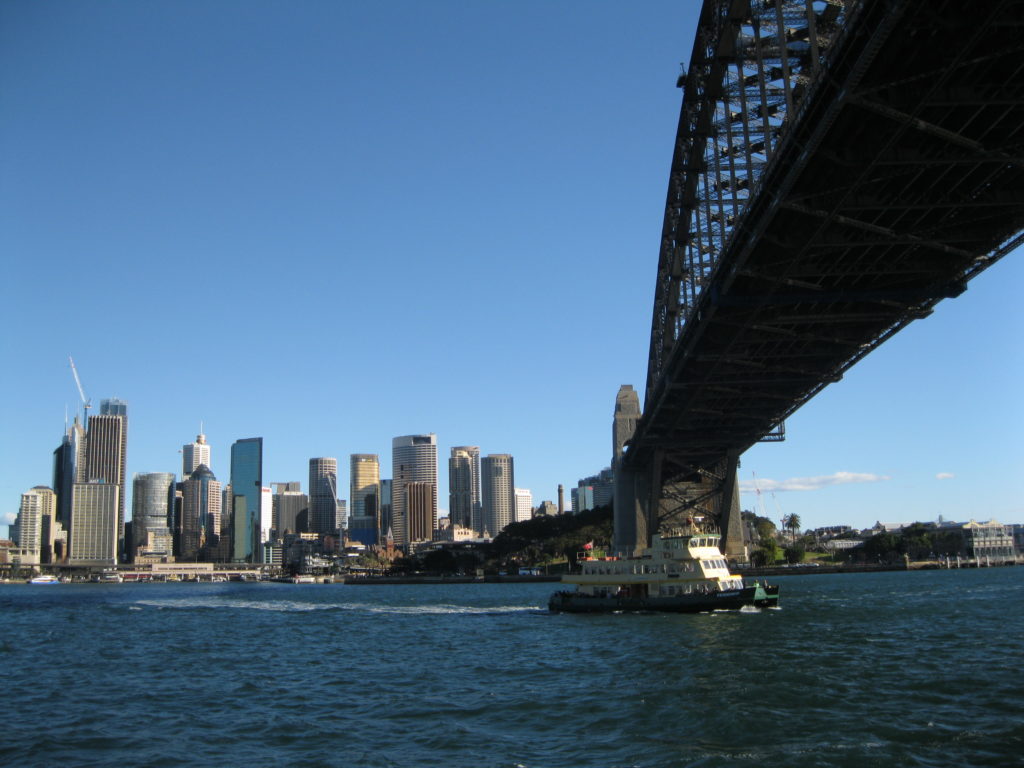
Port Jackson became the location of the new colony and eventually the name Sydney was chosen by Captain Phillip. The official proclamation and naming of the colony took place on 7 February 1788.
Lieutenant William Dawes created a town plan in 1790 which was completely ignored by the colony’s leaders. Sydney’s layout today reflects the lack of planning unlike all other capital cities in Australia. This is also the charm of Sydney. Instead of having a planned grid setup, the city has a lot of small and curvy streets.
Between 1788 and 1792, 3,546 male and 766 female convicts arrived in Sydney. Few of them had the skills needed for establishing a colony. In 1791 a food crisis occurred as the land was not suited for agriculture and supplies from overseas were limited. But from 1791 onwards more regular arrival of ships improved the situation with supplies and beginnings of trades.
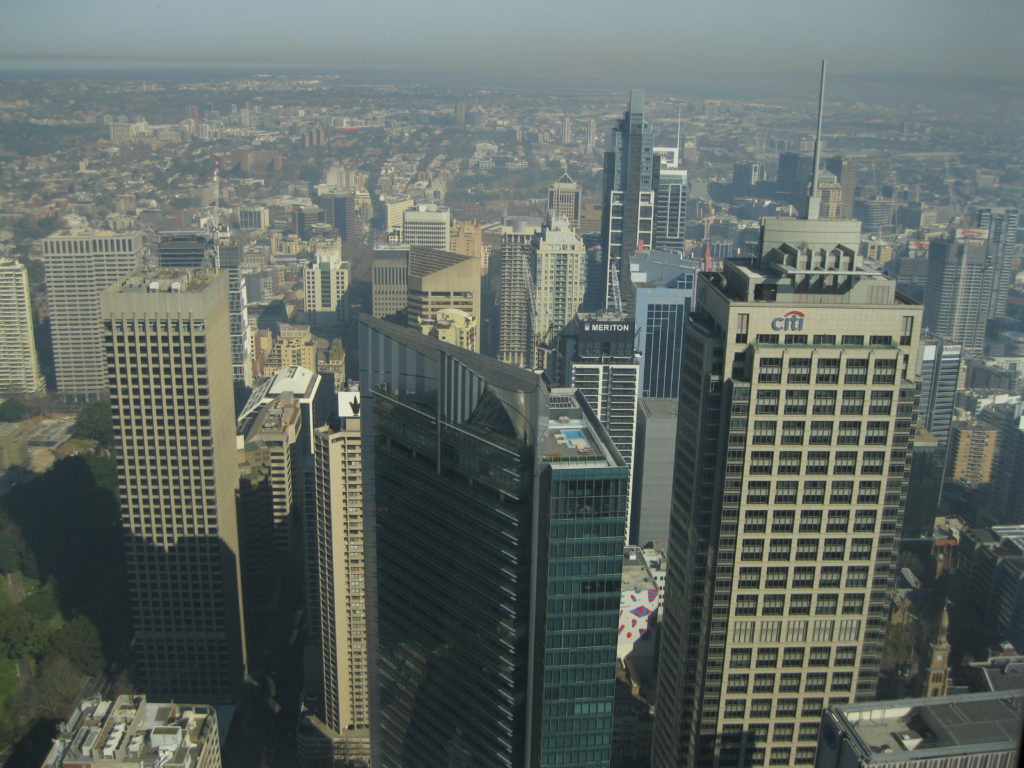
Phillip sent expeditions in search of better soils and decided on the Parramatta region as a promising area for expansion. Many convicts were moved in late 1788 to establish a township.
Between 1788 and 1792 the majority of the population consisted of convicts. In one generation the amount of freed convicts who could be granted land grew. They would pioneer Sydney’s private sector along with soldiers whose military service had expired and later by free settlers from Britain.
Roads, bridges, wharves and public buildings were constructed by using convict labour and by 1822 Sydney had banks, markets and well-established thoroughfares.
The Suburbs
Greater Sydney is divided into a selection of suburbs. The definition of a suburb in Australia is different to the United States, Canada and Great Britain. In New York City it would be referred to as a neighbourhood. These suburbs are each a part of a metropolitan region and are in many cases quite different to each other which makes Sydney such a diverse and astonishing town.
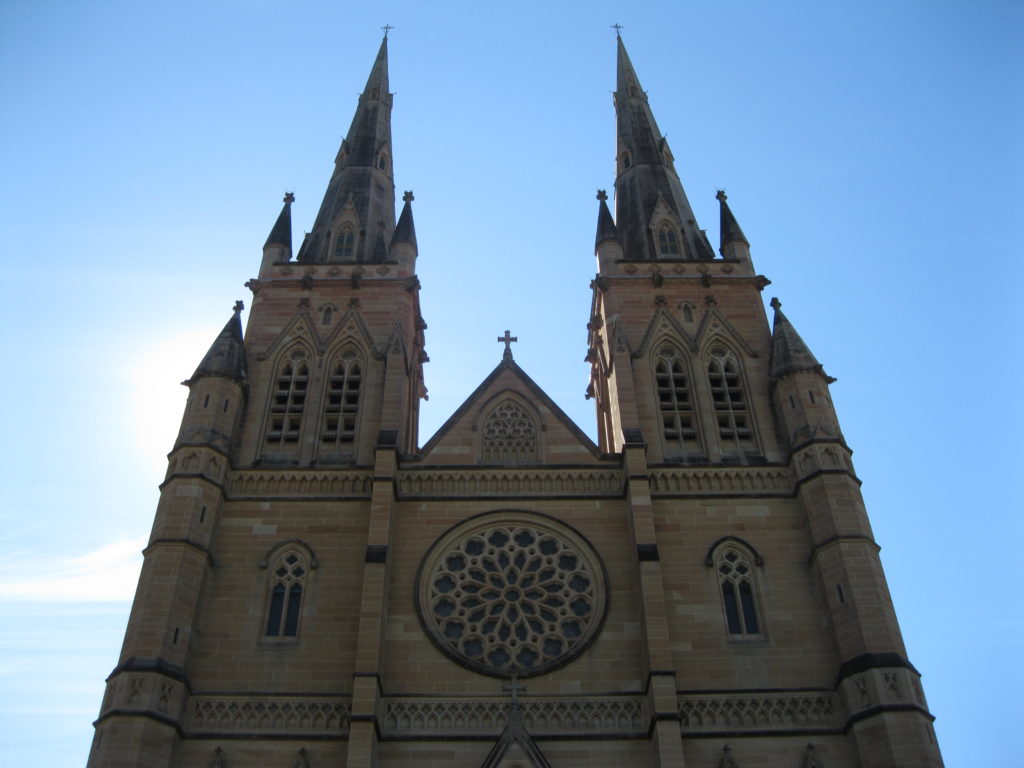
Bondi, Coogee, Manly and Curl Curl among many others are associated with the beaches and the beach and surfing lifestyle. Balmain and Paddington are known for their pub culture. Leichhardt is the Italian neighbourhood with restaurants and cafés dedicated to that specific cuisine. The list goes on and the options are endless.
Technically, the suburb known as Sydney is only the central business district, often called the CBD, in the very heart of Sydney.
The Regions
The metropolitan regions within Sydney are quite distinct as well. Within each region you have a vast collection of suburbs. The Northern Beaches have the many gorgeous beaches such as Manly, Curl Curl and Mona Vale and the Inner West is known for pulsating suburbs such as Leichhardt, Newton and Balmain. The Eastern Suburbs have both metropolitan areas like Woolloomooloo and Potts Point and beach areas such as Coogee, Bronte and Bondi.
Sydney Harbour
Sydney Harbour is exceptionally beautiful, unparalleled and one of the most stunning harbour in the world. Circular Quay is the centrepiece with the Sydney Harbour Bridge standing tall on one side and the Sydney Opera House on the other side greeting people as they sail into the city.
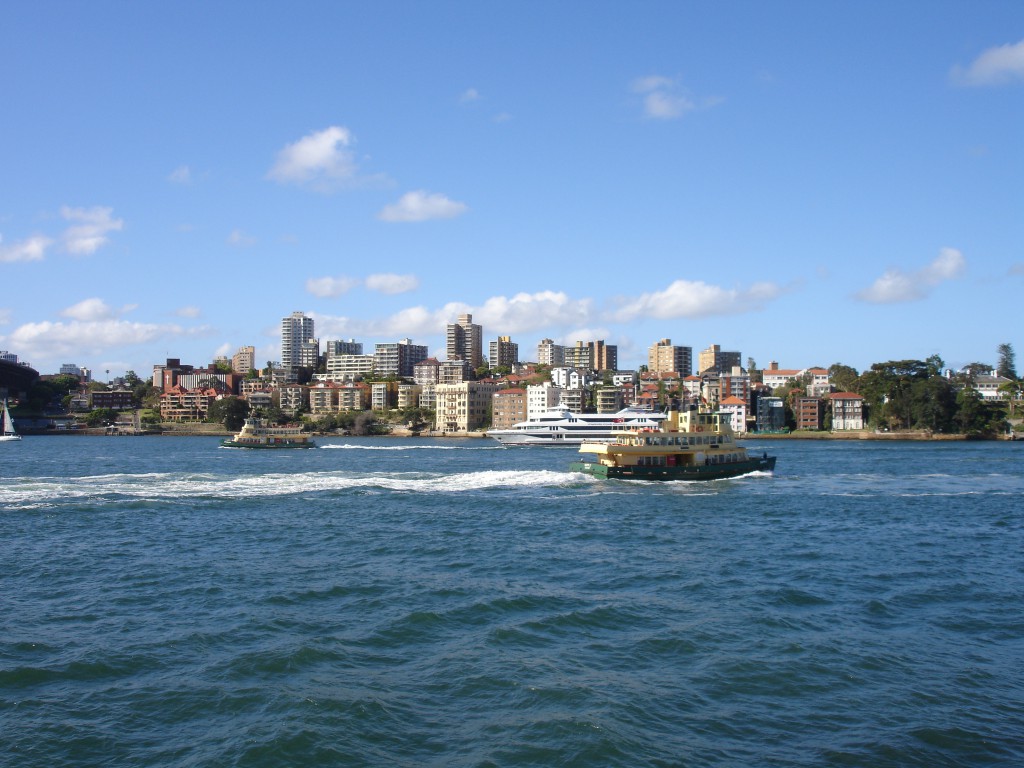
Port Jackson is an inlet from the Tasman Sea and consists of Sydney Harbour. As you enter the inlet, you will be passing Watsons Bay and Sydney Harbour National Park where the Manly Scenic Walk meanders through. The inlet is absolutely breathtaking all the way through down to Circular Quay and beyond. On your way into the harbour you can go exploring up the many bays leading up to different suburbs such as the Spit at Mosman, Balmoral, Taronga Zoo, Cammeray and Northbridge on the North Shore.
As you approach Circular Quay the journey will take you past major landmarks like Mrs MacQuarie’s Chair and the Royal Botanic Gardens. Just across the harbour from here, the wonderful suburb of Kirribilli is located.
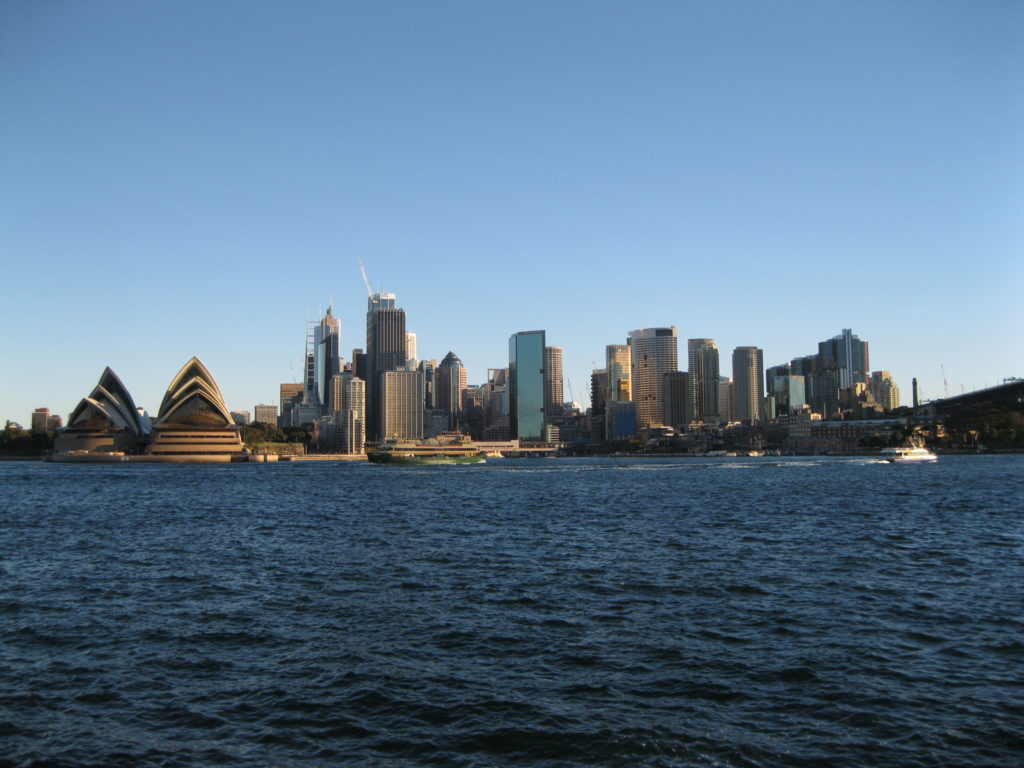
The next major sights are the Sydney Opera House, Circular Quay and as you head onwards under the Sydney Harbour Bridge, Luna Park is located to the right. If you continue a bit further, you can turn to the left past the new Barangaroo Reserve and Barangaroo suburb towards the marvellous Darling Harbour. You could also make your way even further towards the ANZAC Bridge in a slightly different direction.
If you continue straight ahead after passing the Sydney Harbour Bridge, the trip will lead all the way down to Homebush Bay and Parramatta at the very end.
The Sydney Ferries
An amazing, easy and cheap way to experience a big part of the city is by the Sydney Ferries. This is unique and one of the many aspects that makes Sydney such a marvellous town. At the Circular Quay Ferry Terminal, five wharfs (2-6) are located of which four are used for the Sydney Ferries.
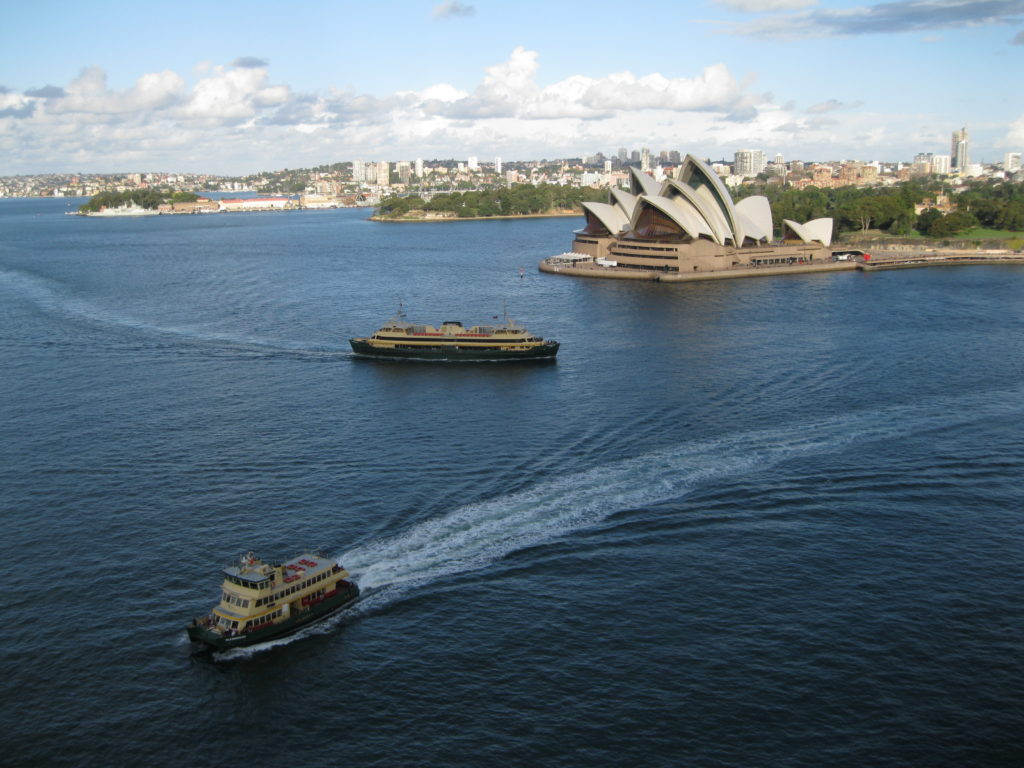
The best way to visit Manly and Manly Beach is by taking the ferry from Circular Quay wharf 2 going straight non-stop to Manly. This is also a fantastic option to cruise through the Sydney Harbour past major hot spots like the Sydney Opera House and Kirribilli with great views of the skyline and the Sydney Harbour Bridge. This trip is so beautiful. If you are considering doing a cruise around the harbour you may as well book the Manly Ferry instead of joining one of the cruise companies.
Many Sydneysiders use the Sydney Ferries daily when commuting to and from work. It is also used a lot by locals for a means of transportation to get around the city. There are several interesting suburbs you can visit by taking the ferry from Circular Quay or from any other ferry wharfs along the harbour.
Places like Balmain, Darling Harbour, Kirribilli, Neutral Bay, North Sydney, Mosman and Cremorne are suburbs that have a lot to offer, each in their own right. Also McMahons Point and Milsons Point are terrific spots, as here you will be treated to fantastic views of the Sydney Harbour Bridge and the Sydney Opera House. Major sights like the Sydney Olympic Park at Homebush Bay and Taronga Zoo in Mosman also have dedicated ferry wharfs which is just perfect for both visitors and locals.
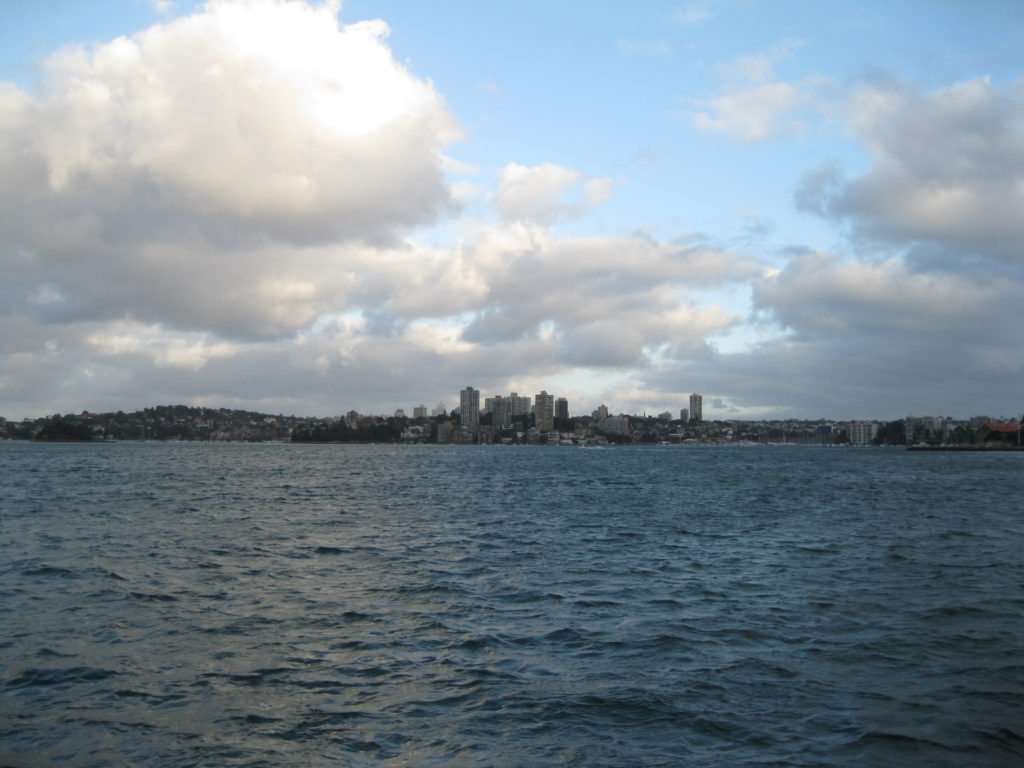
Travelling around the harbour on the ferries amazing and highly recommended as not only is it a great opportunity to see a big part of this vibrant city, but it is only an exciting ride. It is such a fantastic way of exploring Sydney unlike any other city in the world.
The Sydney Ferries gives the city such a cool vibe. Take in the amazing atmosphere as you sail through the city. Get off at a wharf, stroll around and explore a particular suburb, head back and cruise on the ferry to another destination.
Circular Quay
The magnificent Circular Quay is located in the very heart of the city and can simply be described as the crown jewel of the Sydney Harbour. This is one of the most stunning spots in the world and probably the most beautiful harbour area you will ever see. As you enter Circular Quay from the city centre you will be approached by the quays where the Sydney Ferries dock.
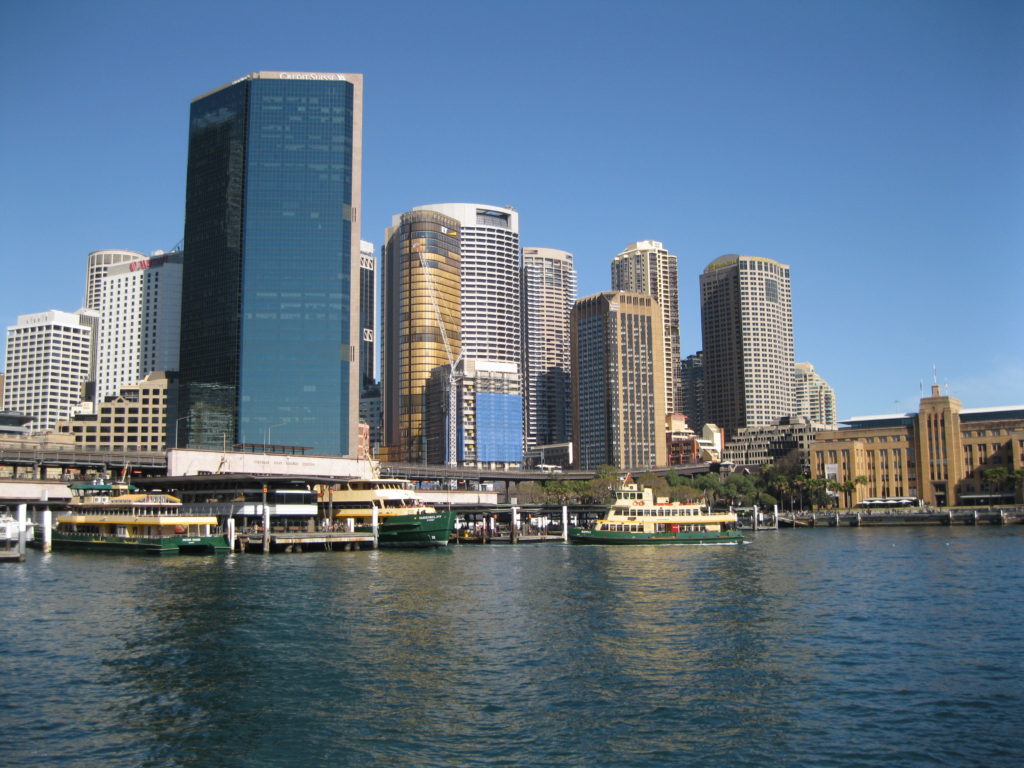
If you head to the left you will be exposed to the glorious view of The Rocks and the Sydney Harbour Bridge. On the other side of Circular Quay the staggering vista of Sydney Opera House at the very tip of Bennelong Point will come into view.
If you take a stroll to the left of the quays and head up along the pier you will be approaching the amazing historic neighbourhood of The Rocks which is located right at George Street. Whether you continue down George Street or further down the pier, amazing vistas of the graceful lines of the Sydney Harbour Bridge with a glorious Sydney Opera House across the harbour will appear before you.
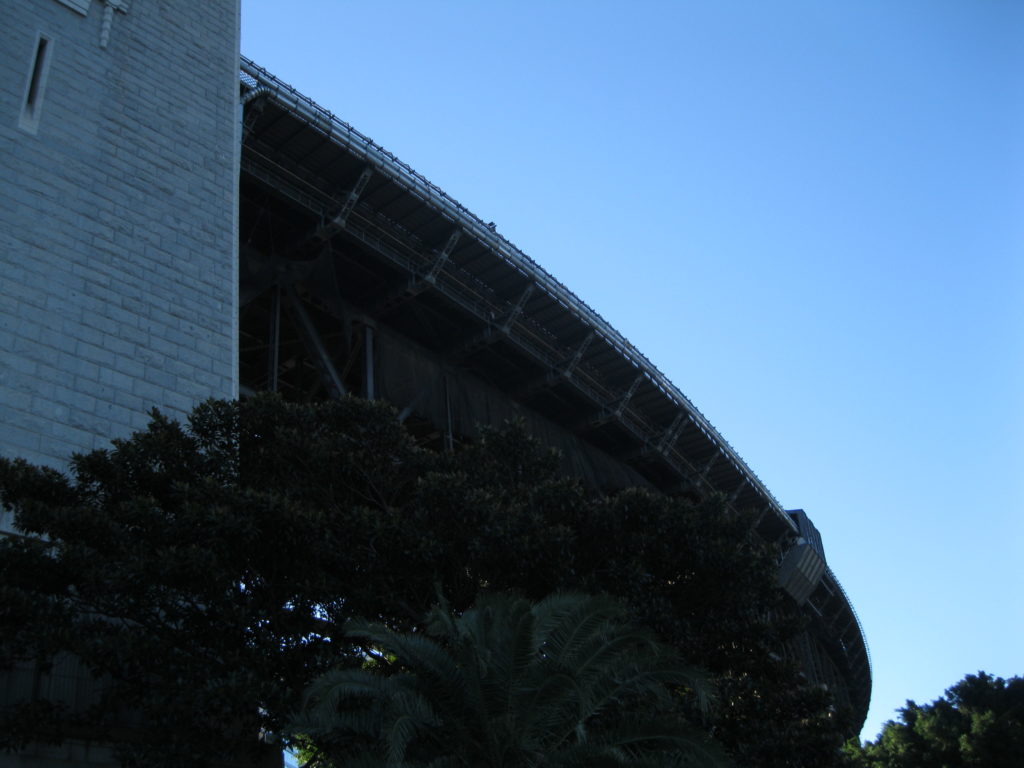
The life and atmosphere at Circular Quay is exceptional. It’s always busy but in a nice and laid back sort of a way. The Sydney Ferries add to the vibrant character of area with cosy restaurants and cafés that provides fabulous views while you are having a chill or a nice drink and a meal with mates or by yourself.
The Sydney Opera House
The Sydney Opera House is a major landmark in town, situated on the perfect spot at the tip of Bennelong Point at Circular Quay in Sydney Harbour. The Sydney Opera House is such an excellent piece of architecture and one of the most spectacular buildings in the world. It is an absolute must to explore this magnificent structure as it will leave you stunned.
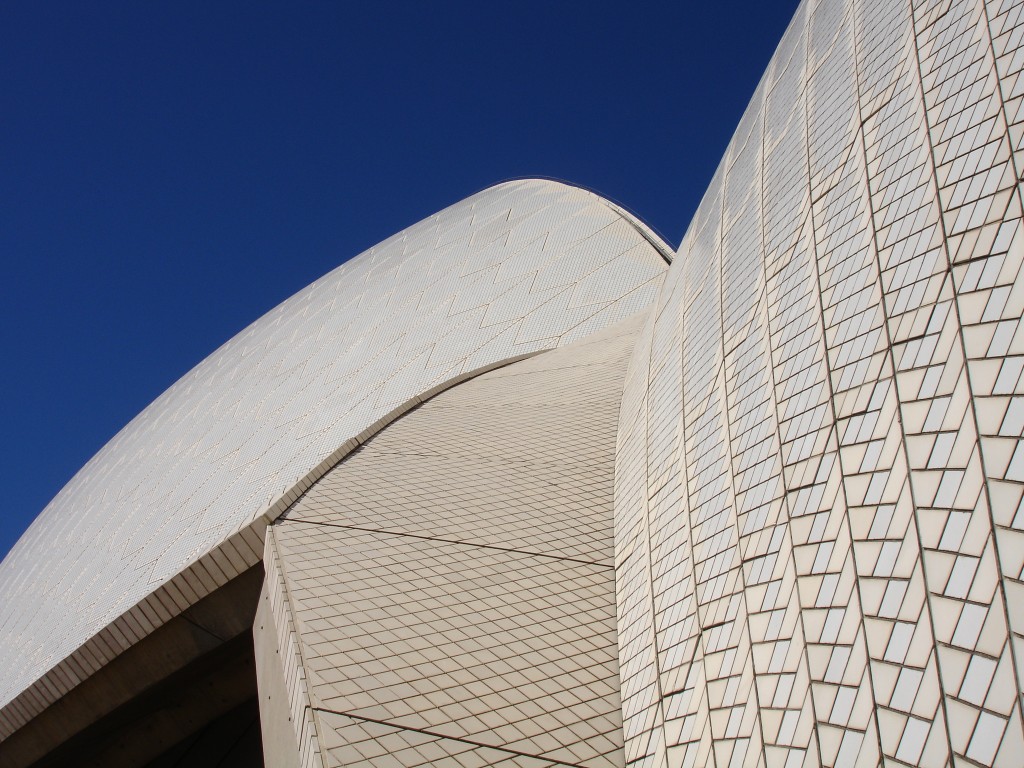
You can easily spend an hour or so strolling around the Opera House, taking it all in and studying the details of the design up close. Depending on the direction of which you are looking, the view and look will be very different.
Not many people take the guided tours of the Opera House which is a shame as they are very good. It is highly recommended as you get a chance to explore the interior design and the amazing the concert hall where many legendary artists have performed. The guides share interesting stories about the decision to make the building, the politics, all the controversy with regard to the budget being exceeded and the architect Jørn Utzon leaving the project unfinished. The Opera House staff are very pro-Utzon and definitely acknowledge his big contribution to this fantastic creation.
The Sydney Opera House is cooled using seawater taken directly from the Sydney Harbour. Cold water circulates through 35 kilometres of pipes to power both the heating and the air conditioning in the building.
The Sydney Opera House: History
In 1956 an international competition was held and 233 designs were submitted. Danish architect Jørn Utzon, relatively unknown at the time, was announced as the winner the following year. It was expected to take four years to build the Sydney Opera House but it took 14 years.
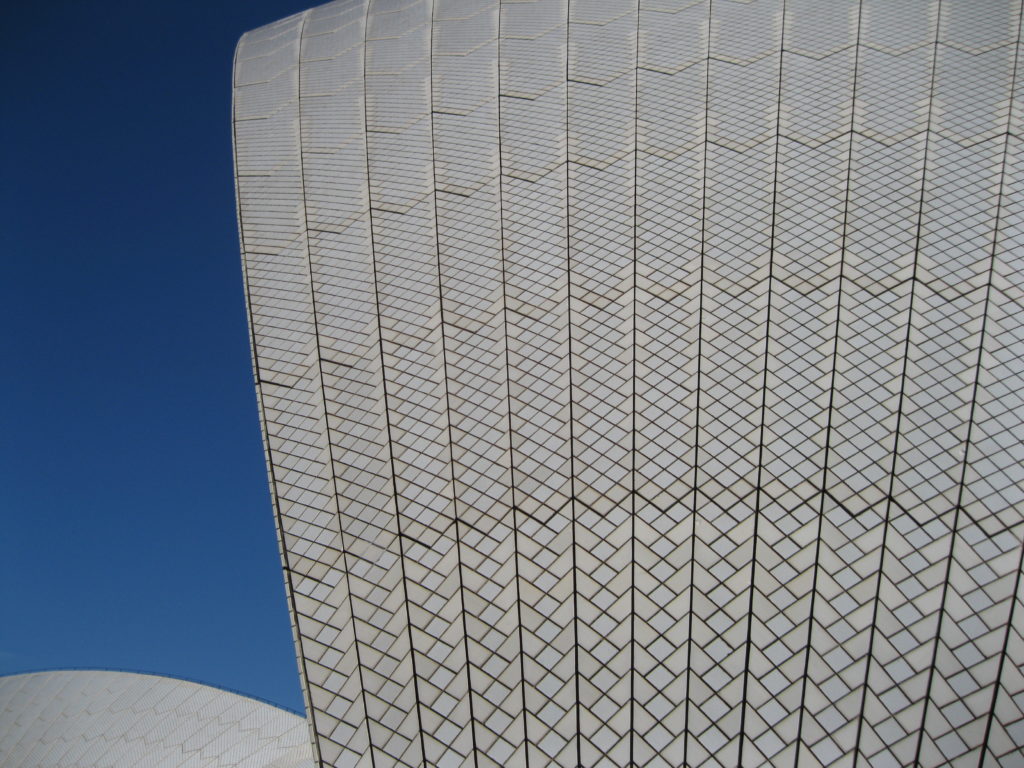
Work commenced in 1959 and involved more than 10,000 workers. The original budget for constructing the structure was 7 million AUD but ended up costing 102 million AUD which was to a large degree financed by the State Lottery.
The Sydney Opera House opened on 20 October 1973.
The Sydney Opera House – and its Amazing Architect Jørn Utzon
Jørn Utzon’s concept of creating a sculptural and curved building broke with the traditional modernist architecture of the time with cube and rectangular designs. It catapulted Utzon’s career and created an exceptional landmark not only for Sydney but also for an entire nation.
Utzon’s entry to the competition in 1956 included schematic designs of his vision for the building, but how it would be constructed was not explained. How the concrete shells would be created would bewilder the engineers for years to come. Utzon would with time come up with a so-called spherical solution.
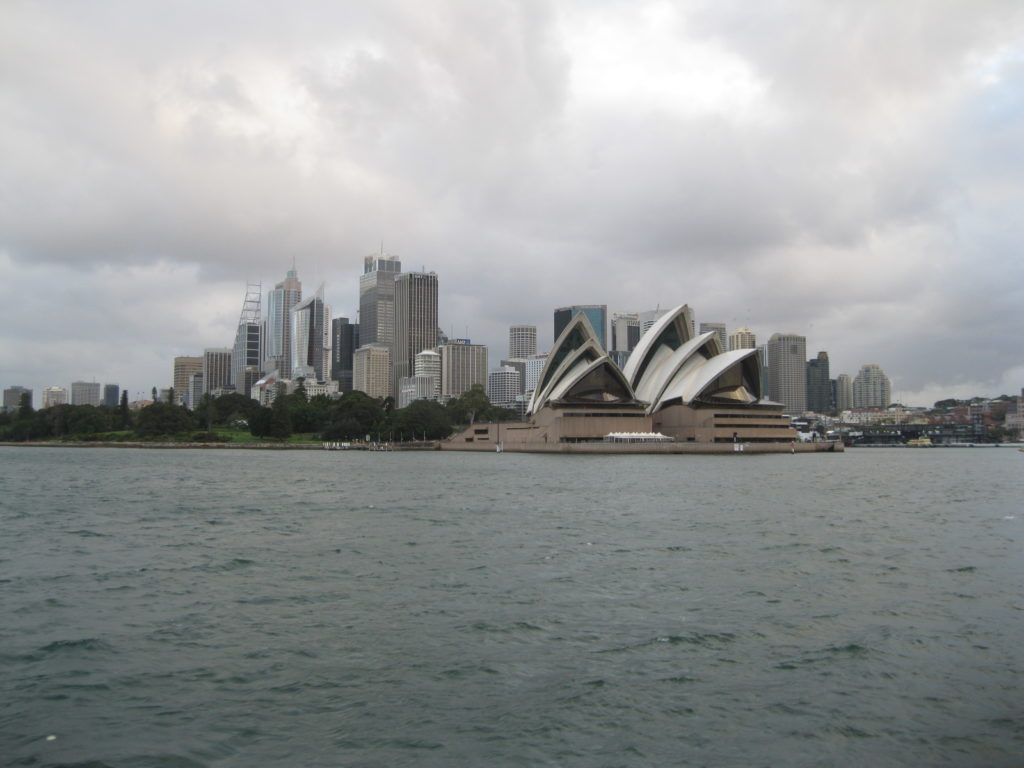
It all came to him as he was stacking shells of a large model to make space when he noticed how similar the shapes were. Previously they had seemed different to each other but now they appeared to be similar which meant that the building’s form could be more easily prefabricated. Furthermore a uniform pattern could be created for tiling the exterior surface. This would be the single most significant discovery that made the distinctive characteristics of the Sydney Opera House as seen in the vaulted arches, the sail-like design and the finish of the tiles.
As the challenge of how to build the exterior was resolved, the second phase started in 1963 which took three years in the making and during this period the relationship between Utzon and the NSW Government deteriorated. The politicians were concerned about the mounting construction costs but Utzon was determined to maintain full control of the design and his vision. As the vaulted sails took shape so did the political battle.
Utzon’s spherical solution was approved in 1959 at a cost of 3.5 million pounds, but by mid-1962 the costs had reached 13.7 million pounds. In 1963 The Government wanted to change the seating arrangement in the main hall and by 1964, Norman Ryan who was the Minister for Public Works, demanded drawings on the interior which was a part of the third stage of construction. All this added to Utzon’s frustration as he didn’t agree or find it possible.

In 1965 the government changed from Labor to the Liberal Party. As Utzon’s relationship with Norman Ryan was strained he was hopeful. But it turned out to be the beginning of the end of Utzon’s venture. By late 1965 Utzon need additional funding for prototypes for plywood beams. Without these prototypes Utzon could not complete the drawings for the interior, also knowns as stage three. As the drawings were not completed, the new Minister for Public Works, Davis Hughes could stop payments to Utzon.
On 28 February 1966 Utzon and Hughes had a meeting about outstanding payments to Utzon and the funding of the plywood beams. Hughes would not make a decision and Utzon threatened to quit which he did shortly after. Hughes immediately made arrangements to make the construction of the Sydney Opera House continue without Utzon.
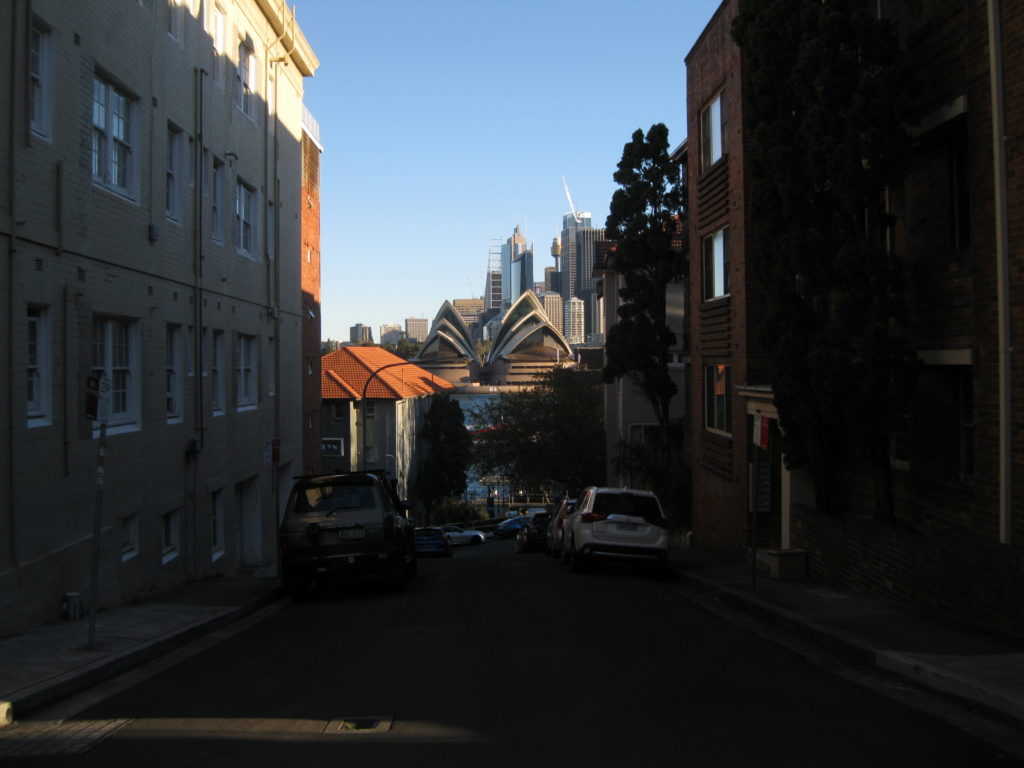
On 19 April 1966 Davis Hughes appointed a new panel of architects with Peter Hall as the head of design. Nine days later on 28 April 1966 Utzon left Australia for good with his unfinished drawings for stage three. Utzon expected to be invited back in a couple of years to complete the building as he thought he would be the only right person for the job. But that never happened. Utzon never returned to Sydney or Australia and he would never see and experience the Sydney Opera House.
The Royal Botanical Gardens
Right next to the Opera House, the Royal Botanical Gardens are situated at Farm Cove which is one of Sydney’s most stunning areas. This is a great spot for a stroll. A lot of different species of plants are found here and some are rare and threatened. The park also has an interesting wildlife.
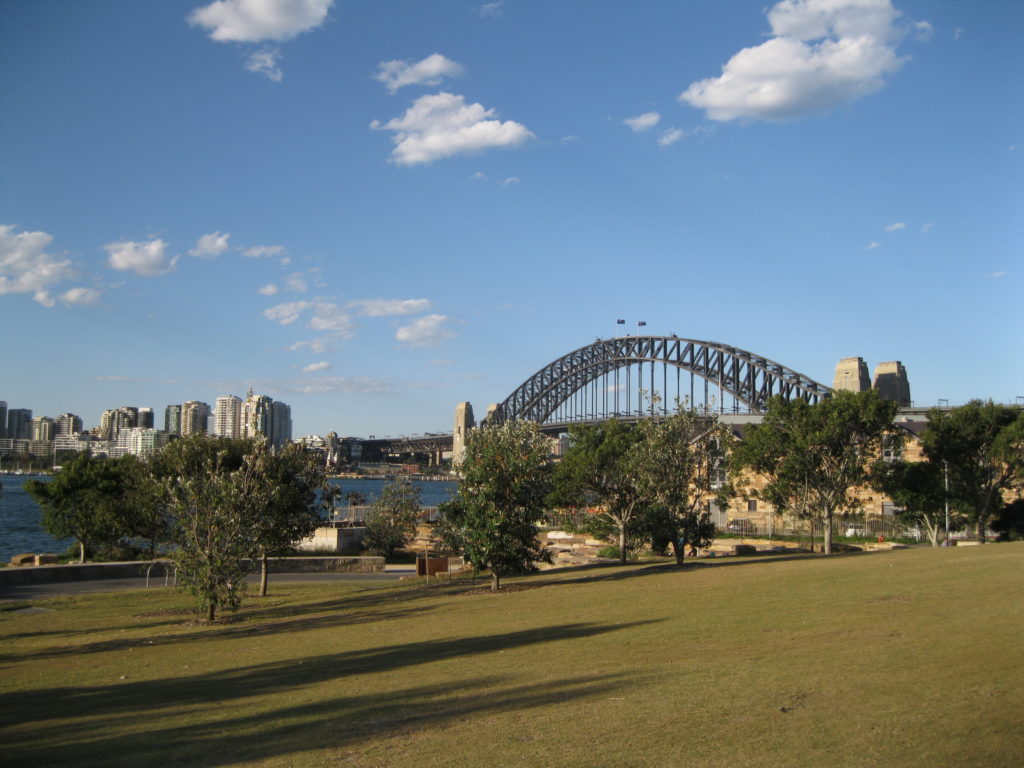
As you head east around the cove you will get to areas with stunning views of the Opera House and the Harbour Bridge. At the very tip of the peninsula of the Botanical Gardens, Mrs Macquarie’s Point is based where you will find the historic Mrs Macquarie’s Chair.
Mrs Macquarie’s Chair
Mrs Macquarie’s Chair is sandstone rock that was hand carved by convicts into the shape of a bench in 1810 for Elizabeth Macquarie who was the wife of New South Wales Governor Lachland Macquarie.
It is said that Mrs Macquarie would sit on the rock watching ships from Great Britain sail into the harbour.
The Rocks
The Rocks is Sydney’s historic neighbourhood and unfortunately one of the few areas left from the early days of the establishment of the city. Visiting The Rocks is an absolute must as you will be treated to everything from amazing architecture, small, narrow and sometimes hilly streets to cosy pubs and restaurants. There is such an awesome buzz.
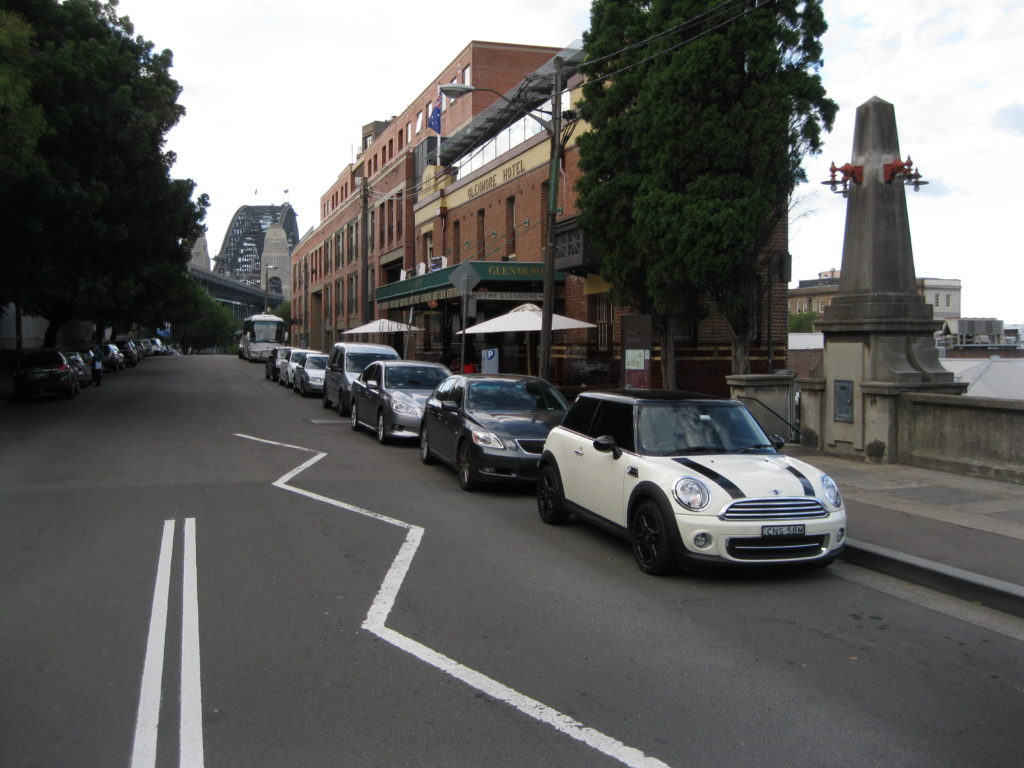
The Rocks was established shortly after the formation of the first colony in 1788. The original buildings were vernacular constructions of wattle and daub with thatched roofs. Later the structures would be made of sandstone which is from where the area got its name, The Rocks.
The Rocks: History
From the early days of settlement, The Rocks was a rough area with convicts, visiting sailors and prostitutes. Later during the late 19 th century, The Rocks was dominated by a gang known as the Rocks Push engaging warfare with gangs from other areas in Sydney. Their reign would end by the late 1890s.
During the early 20th century a lot of the buildings were in serious decay and with the outbreak of bubonic plaque the NSW government were planning to demolish and rebuild the areas. More than 3,800 structures were inspected and hundreds were demolished. But the continuation of these plans came to a halt due to World War I. Several hundred more buildings were demolished during the contruction of the Sydney Harbour Bridge in the 1920s.
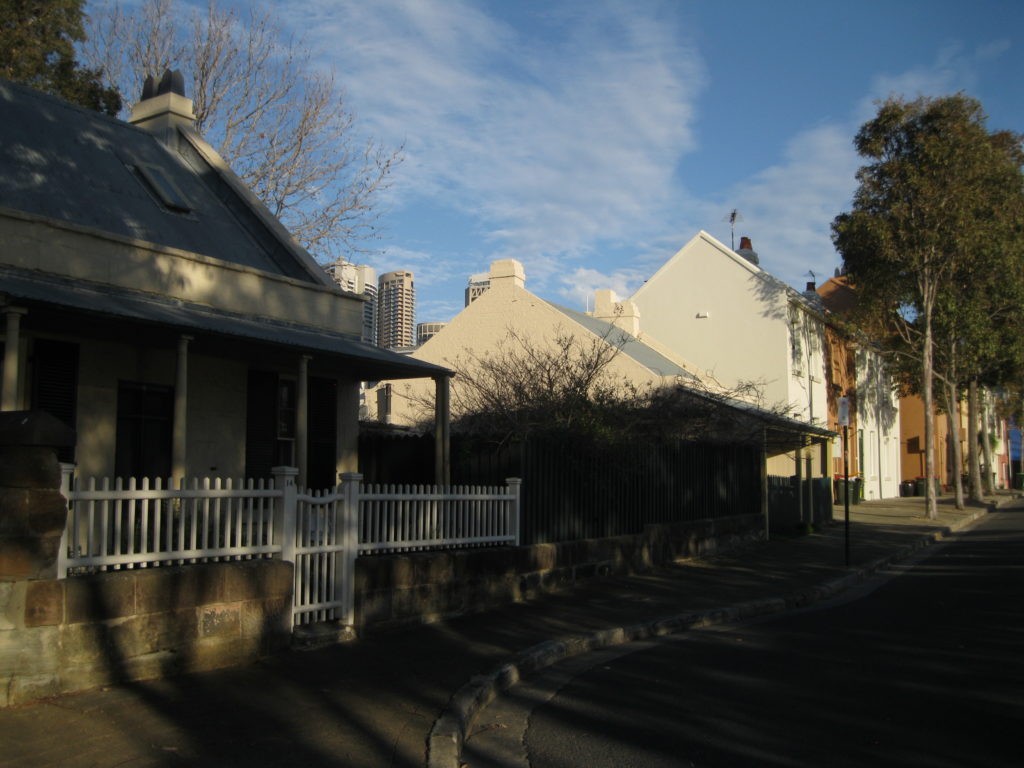
In 1968, the NSW government gave the control of The Rocks to the Sydney Cove Redevelopment Authority, with the intention of demolishing most of the original buildings and redevelop the area. In February 1971, local residents formed the Rocks Residents Group as an opposition to the plans. They requested a so-called green ban, which is a strike action for environmentalist or conservationist purposes. Basically they were more concerned about rent increase as a result of potential new development.
The ban continued all the way to 1973 where the original plans were going to proceed by October 1973. This resulted in two weeks of demonstrations by locals and unionists with following arrests which Liberal Premier Robert Askin used in his election campaign for a re-election by demanding law and order. Still, the green band continued until 1975 when the state union leadership was overthrown and was successful in the end, as the buildings seen today survived. Instead, renovations transformed The Rocks into a commercial and tourist area.
Exploring through The Rocks
As you stroll around The Rocks through the historic cityscape you will encounter many breathtaking views of not only the historic buildings of the neighbourhood but also the Sydney Harbour Bridge and the Sydney Opera House as the backdrop. You will pass by many stunning heritage listed buildings such as the Australian Hotel and the Glenmore Hotel.
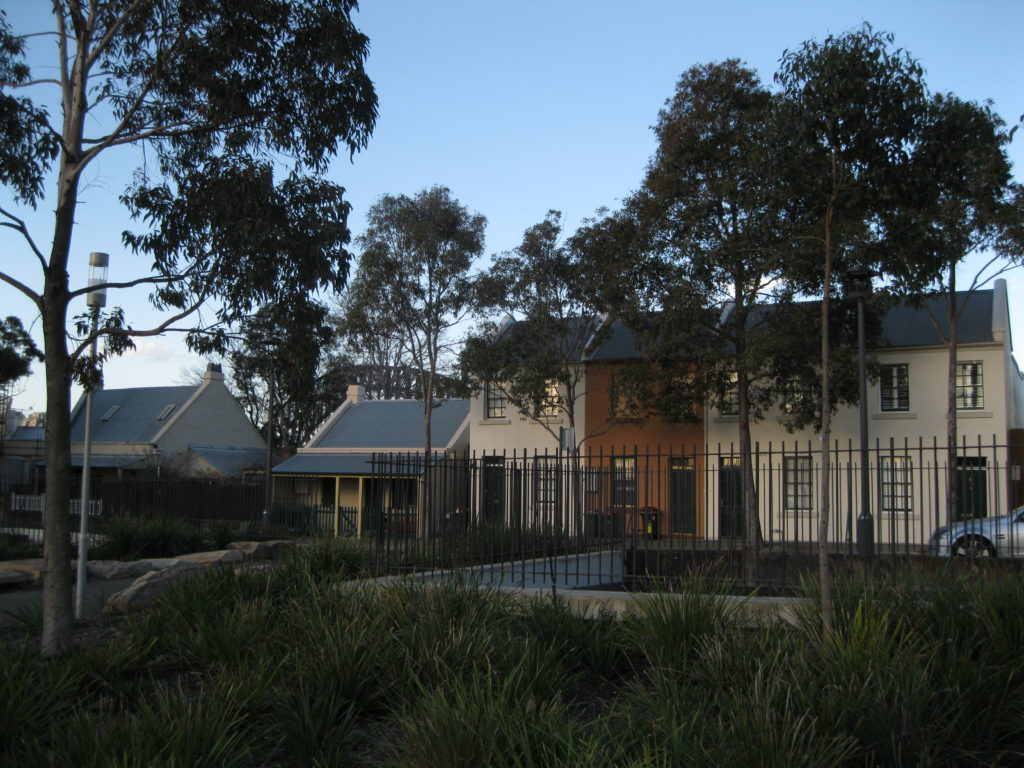
Take a walk down the pier at Circular Quay down along the Overseas Passenger Terminal. You can stop for a bite to eat or a drink at several classy places like the Cruise Bar. It is such an awesome spot at night with the view of the Sydney Opera House, the Sydney Harbour Bridge and the city skyline as the backdrop with boats and ferries sail to and from Circular Quay. It doesn’t get any better than that.
You can continue down further towards the Park Hyatt Hotel to the perfect vista of the Sydney Harbour Bridge. If you stroll down a bit further to the Hickson Road Reserve you will get to the perfect vantage point and photo opportunity of the Sydney Opera House.
The Sydney Harbour Bridge
Walking across the Harbour Bridge on the pedestrian walkway is quite an experience. You should definitely schedule time to do this as it is one of the coolest things to do in town. If you are based in the city centre, head down to Cumberland Street at The Rocks where the entrance to the bridge is located. There’s a flight of stairs to be climbed that will lead you straight to the pedestrian walkway.

It’s about a 1 km (0.6 miles) walk across the bridge that will probably take you about 20-30 minutes depending on how much time you spend admiring the awesome view and taking snaps. The views of the Opera House and the bridge itself are stunning and when heading north bound the amazing view of the suburb of Kirribilli approaches. The walkway is fenced off all the way across the bridge but luckily it is constructed in a way that allows space for your camera lens so pictures can be taken without any obstructions.
All the way across the bridge you will have different views of Opera House. The bridge is one of those spectacular structures which design looks very different depending on the angle. Looking back towards the city centre, the astonishing city skyline comes into view as well. The traffic of Sydney Ferries and other boats across the harbour is just a fabulous sight as well. What an awesome buzz.
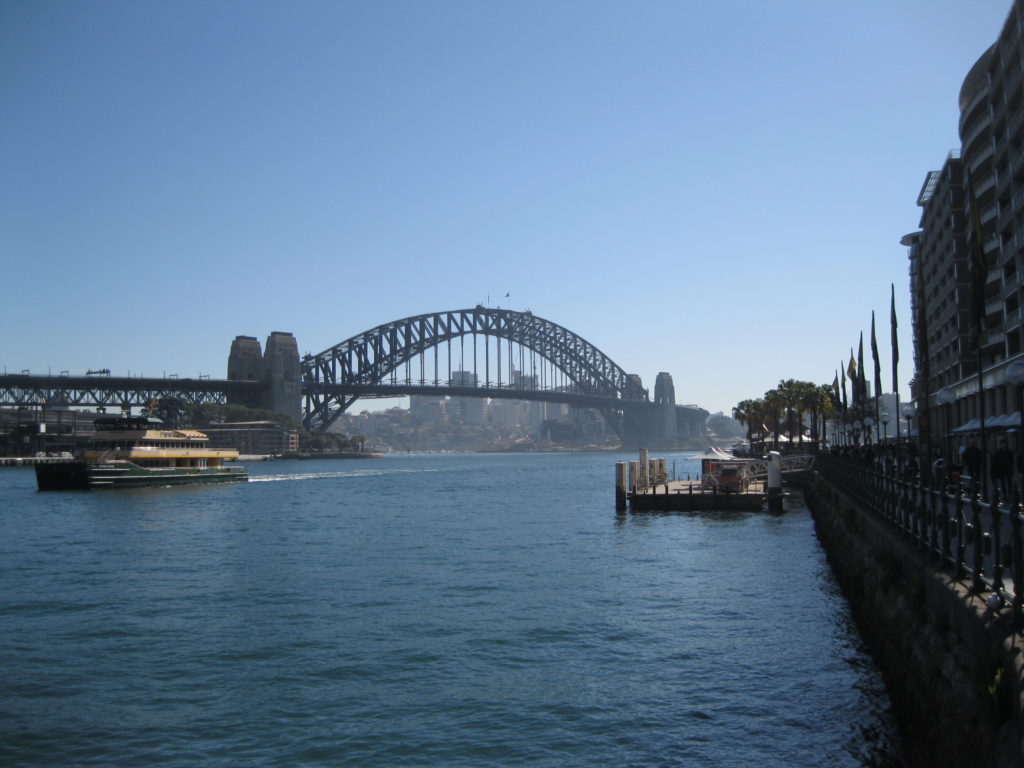
It is highly recommended to have a walk down below the bridge to have a look at the structure on both sides of the harbour. To the north in Kirribilli at Bradfield Park and to the south in the city at Dawes Point.
The Sydney Harbour Bridge: History
The construction of the Sydney Harbour Bridge started in 1923 and was completed in 1932. It is the 6th largest spanning-arch bridge in the world and the tallest steel arch bridge with 134 metres (440 ft) from top to water level.
The Harbour Bridge Climb
If you are up for an exhilarating adventure, you should climb the Sydney Harbour Bridge. This is an experience unlike any other in the world. It’s really pricy so you have to decide whether it’s worth the cost. Unfortunately it is a trend around the world to make these “once in a lifetime adventures” as expensive as the market will bear. If it’s very unique and has a lot of interests, they seem to charge unreasonable prices. This is the case with the scenic flights over the Grand Canyon in Arizona and Uluru in Northern Territory as well.
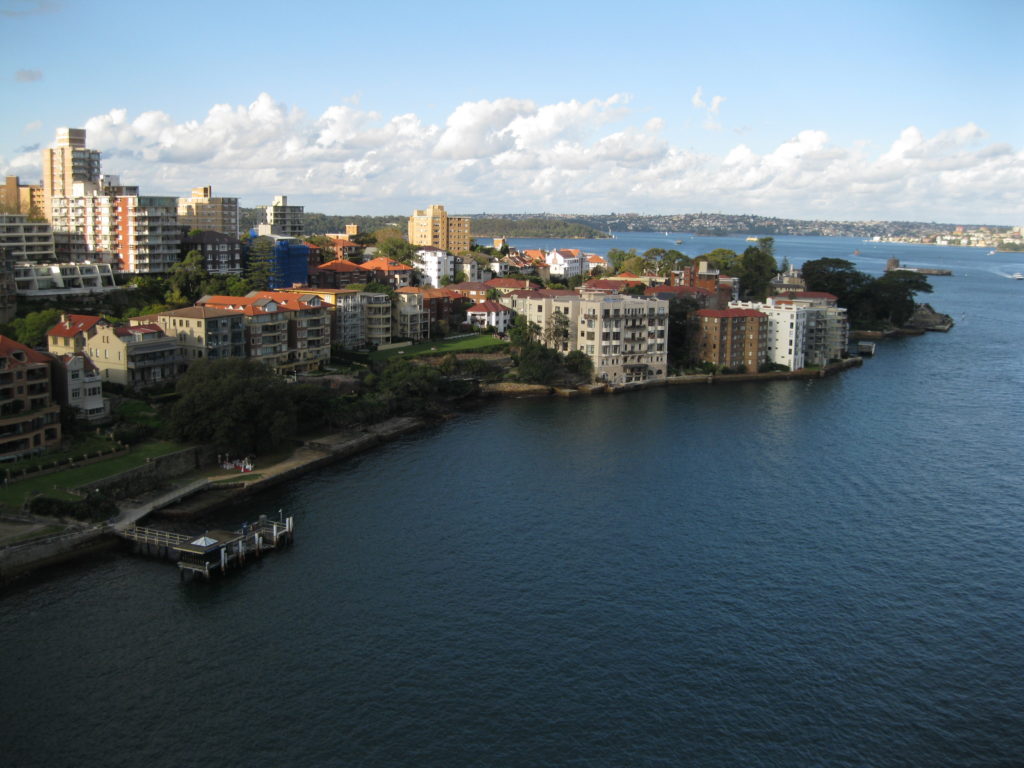
You can climb the bridge both during the day and night. Both options are fantastic. The location of the Harbour Bridge Climb is found at The Rocks at 3 Cumberland Street in the very heart of Sydney. This is where the adventure starts. The experience is great fun and not too scary. This obviously this depends on your level of high anxiety. If you are not too scared of heights you will be all good.
You will be attached on to a cable, via a cord attached to the special outfit provided for you, all the way through the tour. The only slightly scary part of the tour is the walk at the beginning from the starting point on a grill path out to the bridge itself. Once you get on the bridge itself, the track is quite wide, so you will not be looking down into a void below once you are on the bridge.
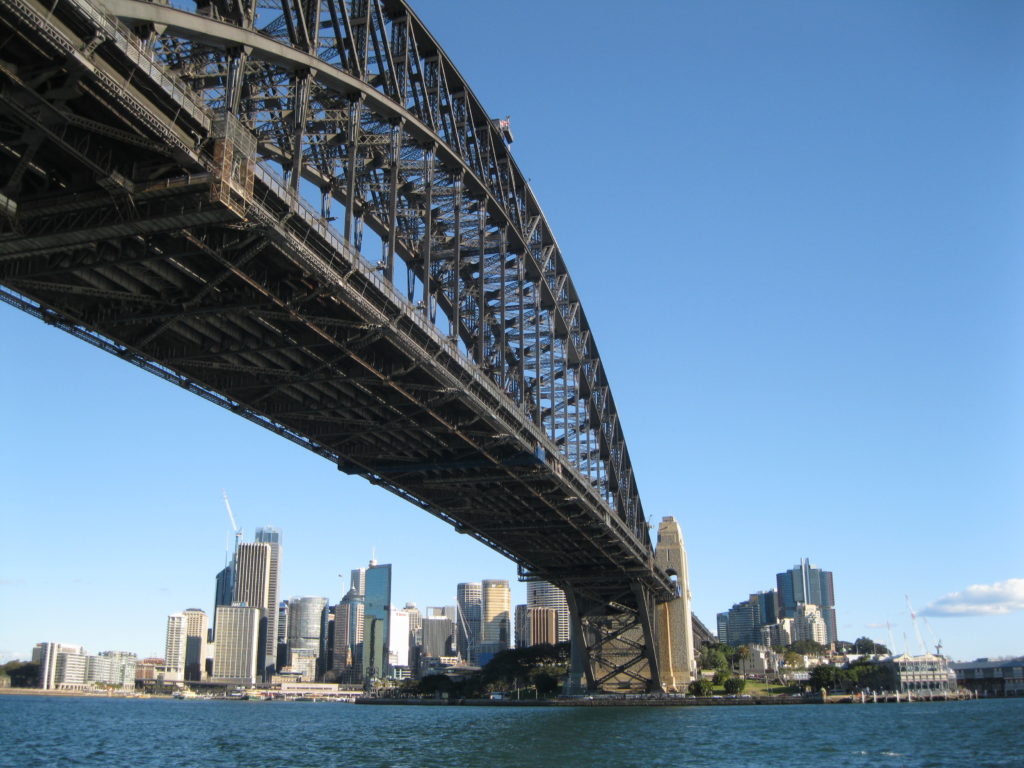
The tour is guided and head phones are provided so you can listen to the commentary of the guide. The walk leads all the way to the top of the bridge on the right side facing Circular Quay. At the very top, you have the option of having your photos taken against the Sydney Opera House and the city skyline and have a break. Afterwards you cross to the other side of the bridge, the left side from where you are walking, facing the other side of the harbour. From this point you will continue your walk down to the bottom where the tour terminates.
Martin Place
Right in the heart of Sydney’s central business district you will find a nice little breathing space called Martin Place. This lovely spot is located between Pitt Street and Castlereagh Street.
It is a square and pedestrian mall surrounded by wonderful heritage architecture and includes the 1927 World War I ANZAC Cenotaph and a beautiful water founatain. Notable buildings are the General Post Office, the Bank of Australasia Building and the Challis House.
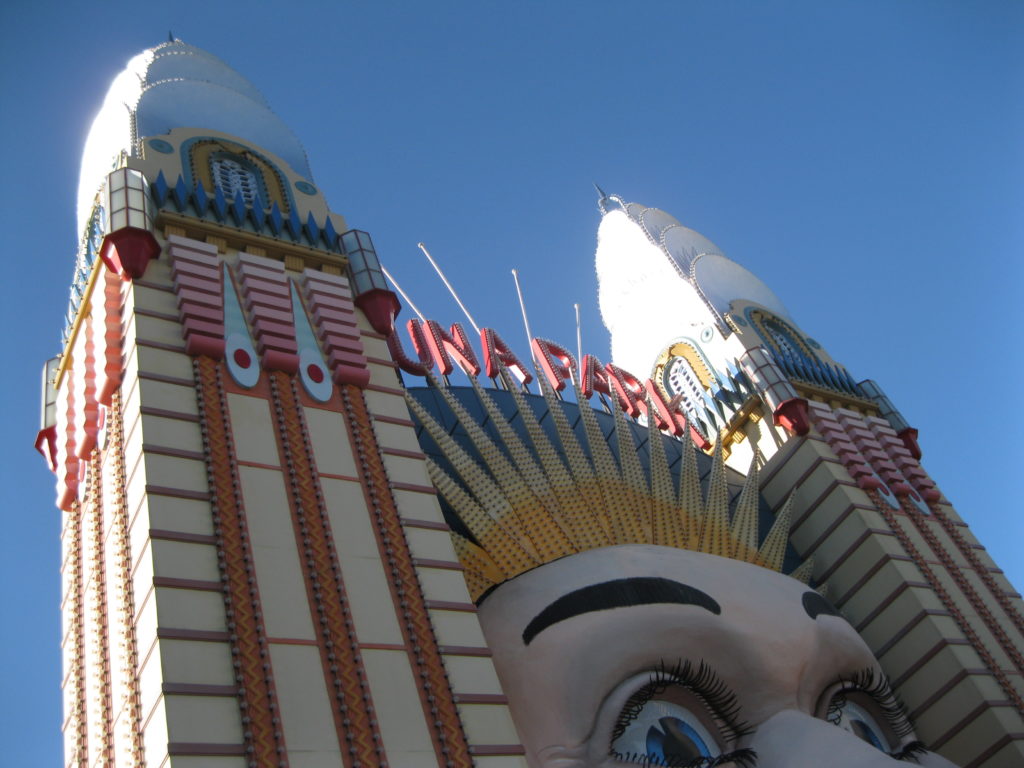
Martin Place as also become popular in modern Australian culture for attracting film and television productions. Parts of the movie The Matrix was filmed in Sydney. During one scene leading actor Keanu Reaves walked up George Street and through Martin Place down to the water fountain on the east side of Pitt Street. A funny aspect is that the clip includes an appearance of an American policeman which is completely out of place when you know that it is actually filmed in Sydney.
Martin Place can on specific occasion be quite busy, especially on ANZAC DAY on 25 April which is a national holiday to commemorate Australian war veterans. Dawn services and parades are held in this connection all over the country and one of the biggest parades go through Martin Place. If you are in town on ANZAC Day, attending this event is highly recommended as it is a fantastic day where you will feel the great vibe and atmosphere all throughout the city.
The General Post Office
The most notable building on Martin Place is the Sydney General Post Offce. This wonderful sandstone structure was designed by James Barnet in the neo-classical architectural style. Construction took place from 1856 to 1891. It stretches 114 metres (374 ft) all the way from George Street to Pitt Street.
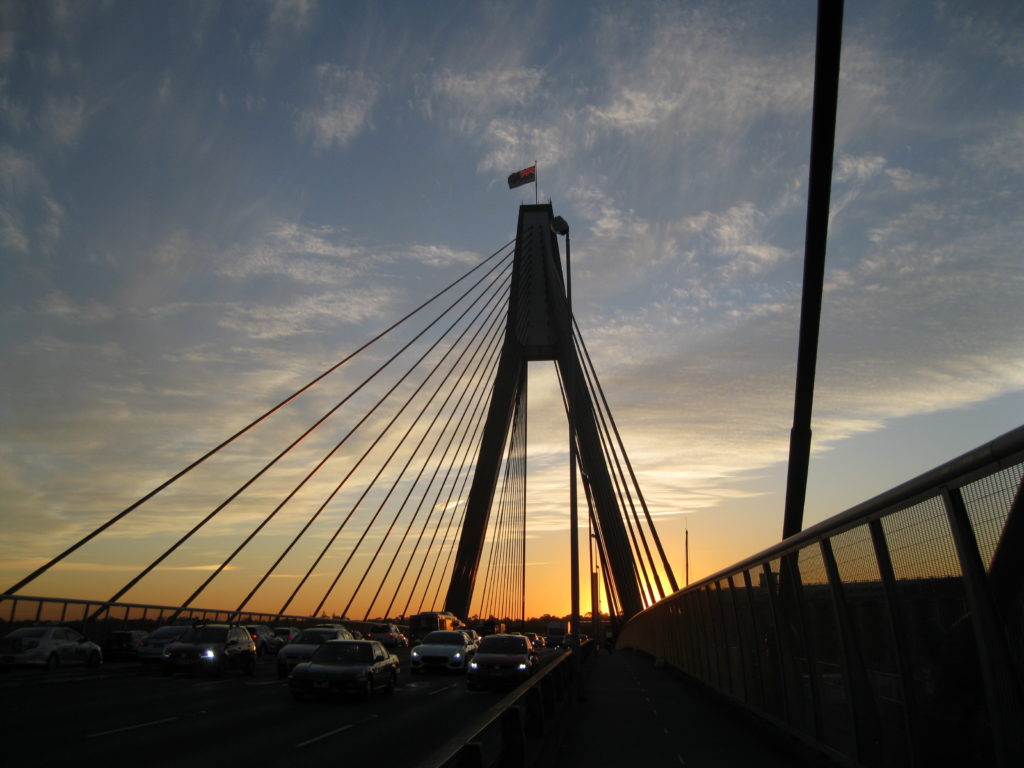
The sandstone used was for the most part mined locally at Pyrmont and it is one of the largest sandstone buildings in Sydney. It is said to be one of the finest Victorian Italian Renaissance style buildings in New South Wales.
The centrepiece of the building is clock tower rising from its 100 metre (328 ft) tall façade. The building was the headquarters for the New South Wales postal system until 1996 when it was sold, refurbished and now contains shops, cafés, restaurants and bars.
Pitt Street Mall
If you want to find the perfect spot for a shopping spree or if you feel like having a stroll around, then you should head down to Pitt Street in the very heart of the city.
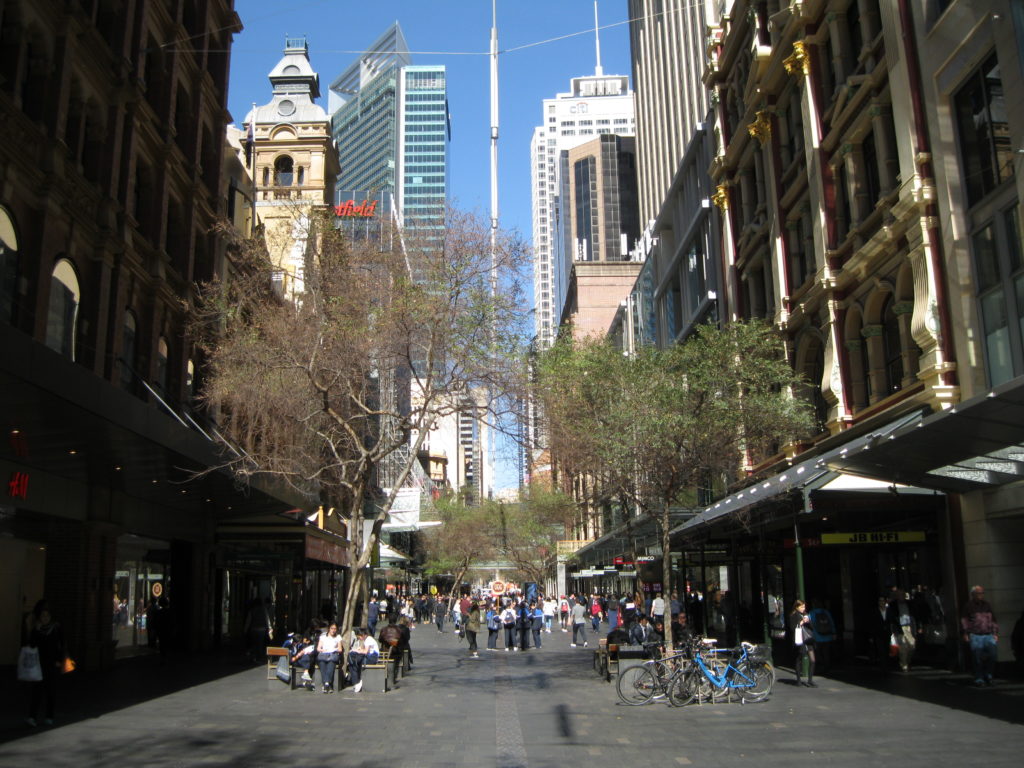
You can browse through all the different shops, have a chill at one of the many café and restaurants or even check out the Sydney Tower (formerly known as Centre Point).
Pitt Street Mall is surrounded by George Street to the west, Castlereagh Street to the east, King Street to the north and Market Street to the south. Pitt Street Mall is not only the ground level shopping street, but also the many stores, cafés and restaurants found in the buildings to the left and right of the mall. Furthermore when entering the buildings you will find underground paths leading through many exciting walkways connecting the mall with other parts of the city.
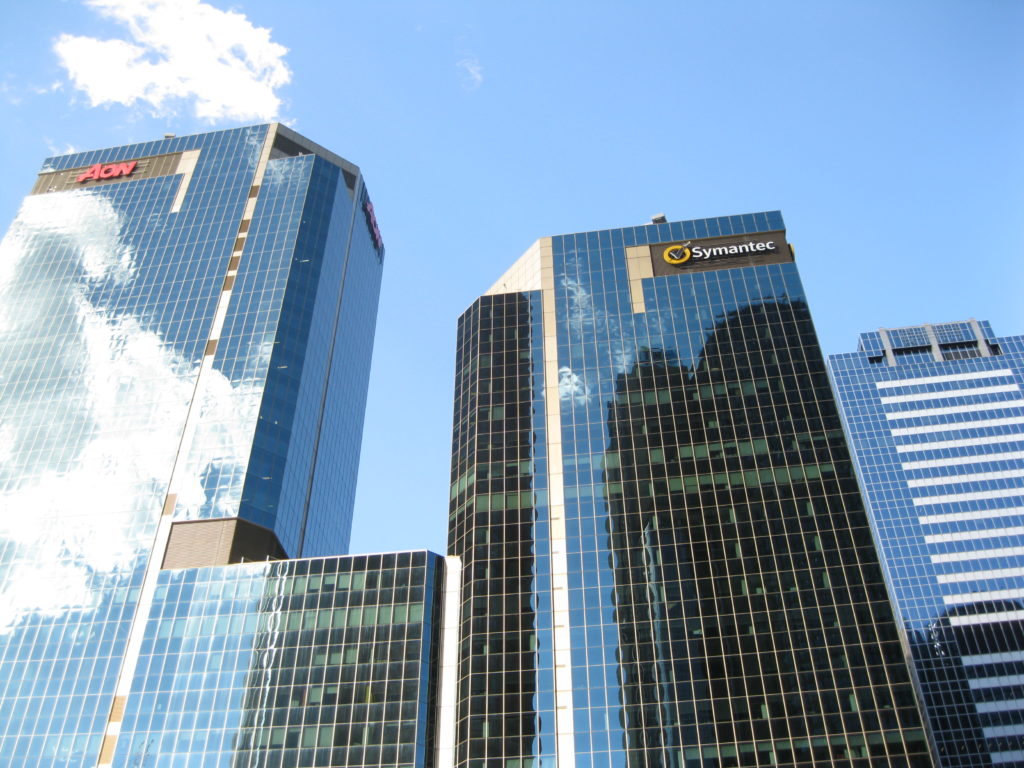
If you want to have a chill or a meal, head down the flight of stairs below the big department store Myer to the food court. There is a vast selection of cuisines to choose from and quality is really good. There a nice busy buzz here in cosy surroundings. Afterwards continue through the underground path through corridors of many shops in some areas on several levels that will lead all the way to the historic Queen Victoria Building.
Other option is heading into the corridor passing the Sydney Tower all the way through the different shop which leads down to Castlereagh Street at the end. You could also walk further up the Pitt Street Mall to the Strand Arcade which is really neat as well.
The Sydney Tower
Right in the heart of the city you will find the Sydney Tower which is visible from a large part of Sydney as it is the tallest structure in town, standing tall with its 309 metres (1,014 ft). It’s officially located on Market Street but is also accessible from the Pitt Street Mall and Castlereagh Street.
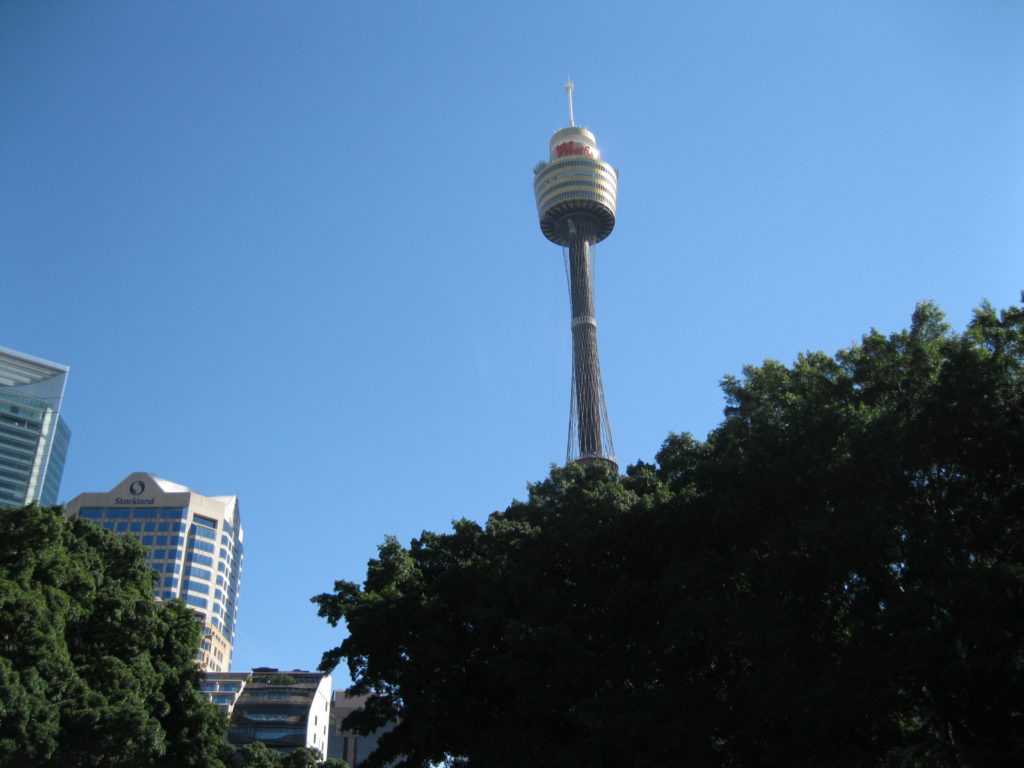
The tower was completed in 1981 and was formerly known as the Centrepoint. It has the second highest observation deck in the Southern Hemisphere where you will be exposed so some stunning panoramic vistas of the Sydney CBD and surrounding areas. It is quite the experience to watch the skyline, the Sydney Opera House, the harbour and the Sydney Harbour Bridge from this bird’s eye view.
As an alternative, you can pay the rotating restaurant a visit and have the buffet lunch. The restaurant is known as the Sydney Tower Buffet and you will be treated to a delicious feast. It’s a great way of checking out the views of the city whilst enjoying a gourmet meal. Ask for a table near then window when making your reservation. Even if you don’t have a seat by the window you have a stroll around and take some shots of the city. The only issue during the day is the angle of the sunlight. It can be very difficult or impossible to take some photos due to the reflection of sunlight.
The Strand Arcade
The Strand Arcade is a three storey tall Victorian-style shopping arcade that leads all the way down to George Street. It was designed by English architect John Spencer, built in 1891 and opened the following year. It was the very latest in shopping centre designs at the time and it still contains preliminary boutiques that represents the shopping experience of the 1890s. The gallery is designed with cedar staircases, tiled floors, cast iron balusters and timber framed store fronts.
It’s a classy arcade to have a stroll through which can be done in connection with exploring Pitt Street in general. You don’t necessarily have to go here to buy anything, but just to experience the atmosphere.
Queen Victoria Building
The beautiful Queen Victoria Building is a shopping centre as well with its connection to the Pitt Street Mall through the underground walkway. The structure which is also known as the QVB is bounded by George, Market, York and Druitt Streets.
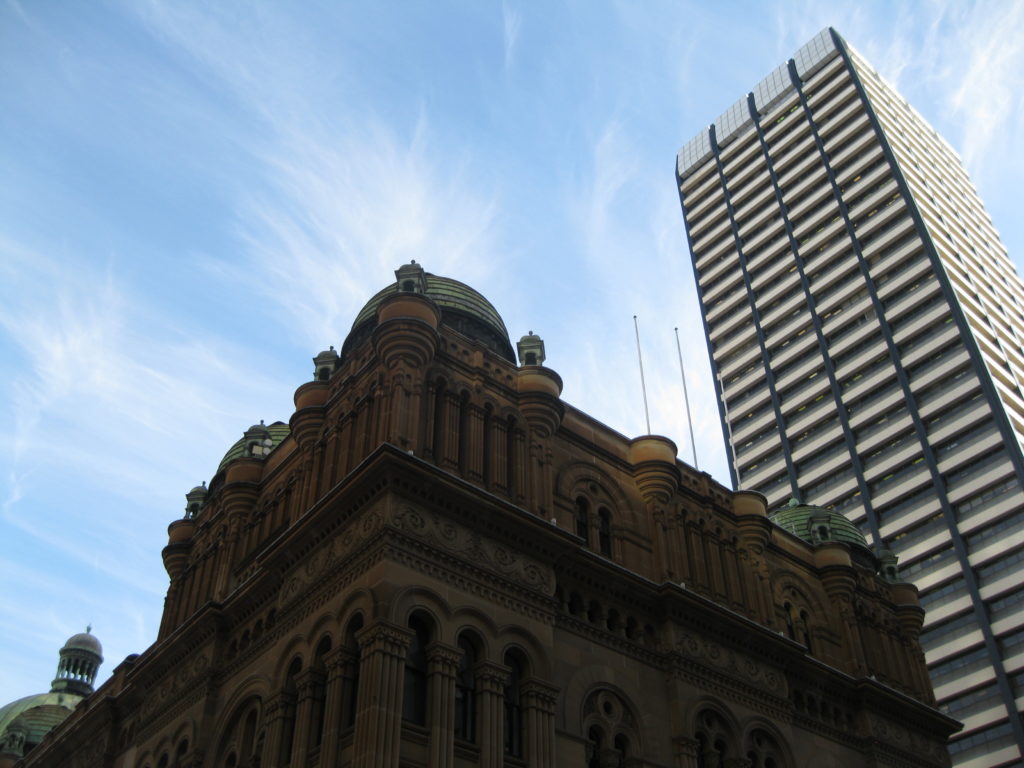
The architectural style is Romanesque Revival and was completed in 1898. It was constructed during a recession and the grand design of the building was planned so the Government could commission a lot of unemployed craftsmen such as stonemasons, plasterers and stained window artists. It replaced the Sydney Market based on the site at the time.
The building consists of four floors and in the centre the Great Australian Clock is located.
George Street
The high street of Sydney is George Street. It is 3 km (1.9 miles) long and runs straight through the heart of the city surrounded by many impressive buildings. It also has the most high rise buildings and the biggest concentration of the largest Australian companies located around one street in all of Australia. George Street goes from The Rocks in the north all the way down to around the Central Station in the south where it terminates.
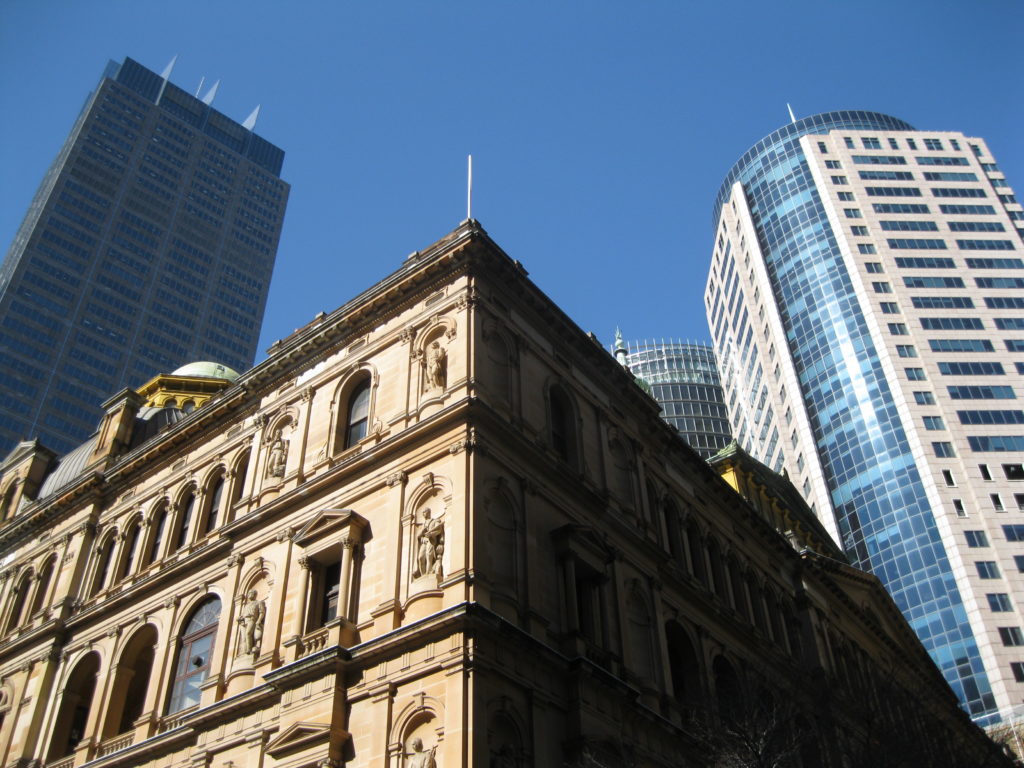
A stroll through George Street it will take you to a lot of the major hot spots in the city such as The Rocks, Circular Quay, down past Australia Square and Martin Place. It runs parallel to Pitt Street which can be accessed by crossing down King Street which leads directly to the beginning of the Pitt Street Mall.
If you head in the opposite direction on King Street it will lead down to the fabulous Darling Harbour. Right on the corner of King and Sussex Streets the marvellous bar Slip Inn is located. As you pass this establishment you can mosey across a pedestrian walkways and a flight of stairs down towards Darling Harbour.
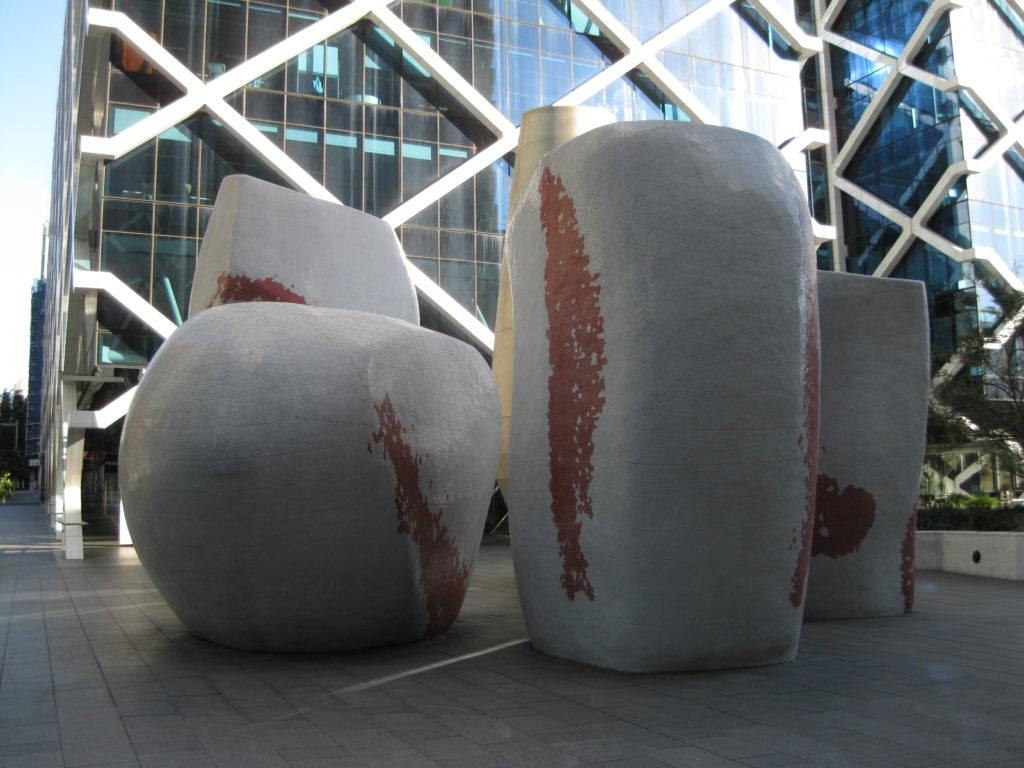
Continuing south, George Street runs parallel with Hyde Park which can be easily accessed from both King and Market Streets. At the very end of George Street, the Central Station is located, close to where the street extends into Broadway.
York Street
York Street is another main street in Sydney running parallel with George Street through the CBD. The street is predominantly used for buses in a north to south direction only. Along York Street you will find major sights like the Queen Victoria Building and other beautiful historic structures such as the 73 York Street Building and the Grace Building which architecture was heavily influenced by the Tribune Tower in Chicago.
Australia Square
In the heart of the city there’s an awesome spot called Australia Square located on the corner of George Street between Bond Street to the north and Curtin Place to the south. This is a great place to hang out on ground level at the bar called Ryan’s Bar which is open from Monday to Friday. There an awesome buzz here in the evening right at the base of the amazing Australia Square Tower.
Australia Square Tower
The Australia Square Tower is based at 264 George Street and is both an office and retail complex. The construction of this 170 metre (558 ft) tall tower, with a floor count of 50, started in 1962 and was completed in 1967. The structure only takes up a quarter of the block on which is stands. It is considered both a landmark building in Sydney and classic Australia architecture.
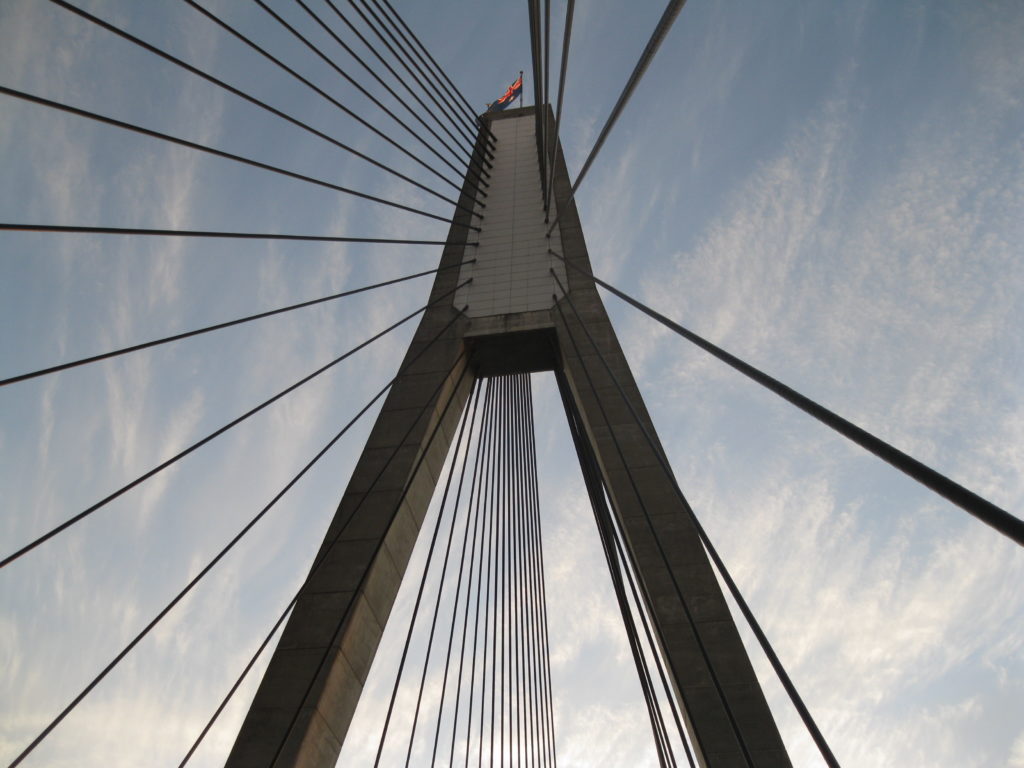
The city originally had a 46 metre (151 ft) height limit to structures, enforced until 1957 but as soon as this was abolished, a construction boom began in the early 1960s. The construction of the Australia Square Tower began shortly after and stood out as the tallest light weight concrete building in the world, the first skyscraper in Australia and the tallest structure in Sydney at the time, a record it held until the construction of the AMP Centre in 1976. Currently it’s the 18th tallest structure tied with the Meriton Tower and the Metro Grand Residences.
Town Hall
A significant landmark in town is the Town Hall at 483 George Street in the CBD. This gorgeous Victorian Second Empire style heritage-listed building was completed in 1889 and was built from local Sydney sandstone. The design was inspired by the Hotel de Ville in Paris. It’s a striking structure with ornaments and a focal tower.
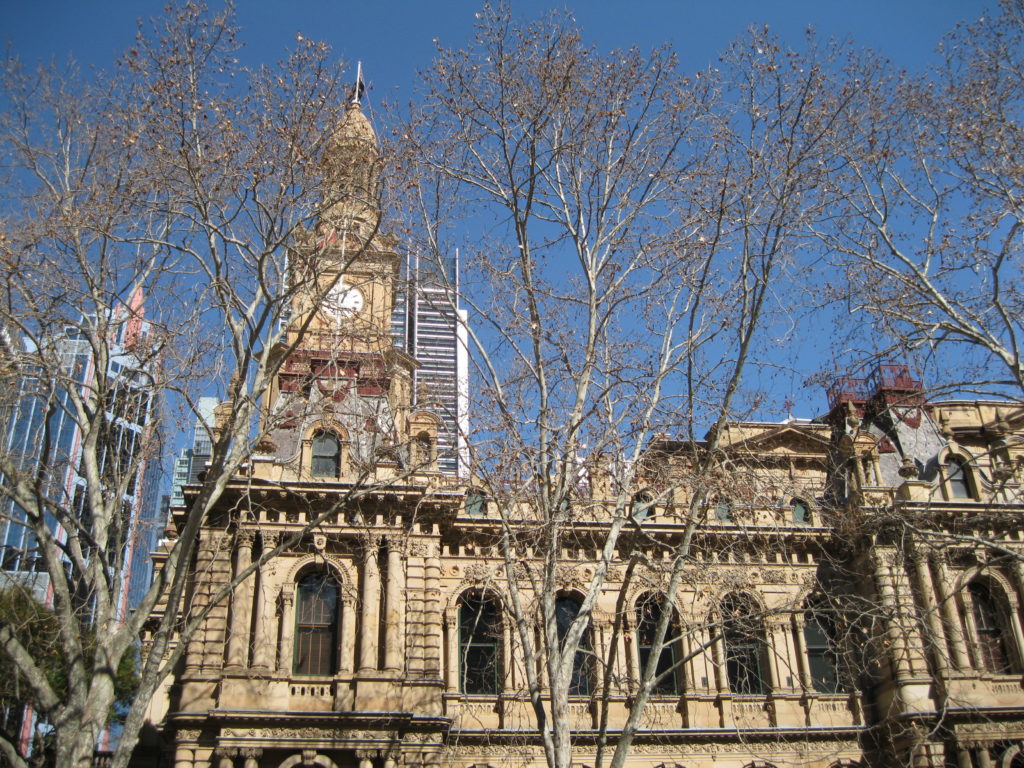
Town Hall was built on the grounds of the former Old Sydney Burial Ground. It was the Sydney’s first permanent cemetery with an estimated 2000 burials made from 1782 to 1820.
The construction of Town Hall began in 1869 and the building was designed to reflect the wealth and status of Sydney. Until the opening of the Sydney Opera House, Town Hall was the major venue for reception of official guests to Sydney.
Hyde Park
Hyde Park, located in the heart of the city, is one of the many wonderful breathing spaces in town. The park is located within proximity of Sydney Town Hall, the Pitt Street Mall and The Queen Victoria Building. This is a lovely spot with a large open green space with an avenue leading down to the wonderful St. Mary’s Cathedral. From here you will get a great view of the city skyline including the Sydney Tower.
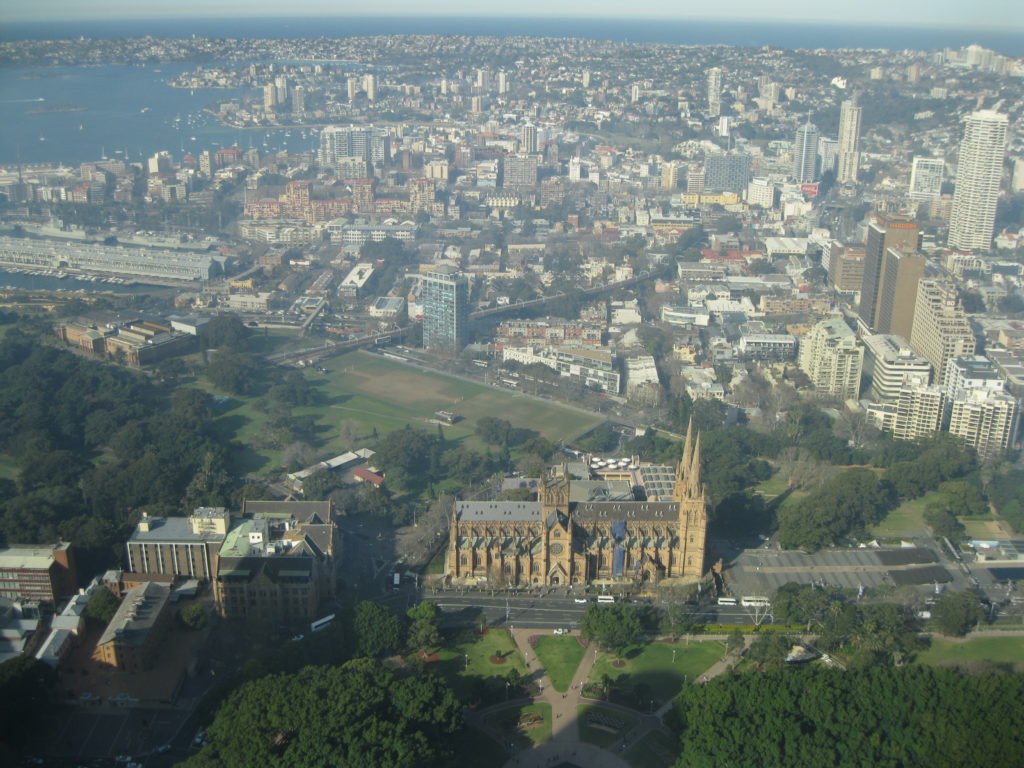
This is the oldest public parkland in Australia, formally reserved as an open space in 1810. Lachland Macquarie, the New South Wales Governor at the time, named the park after Hyde Park in London. The definition of the park was a part of his town planning policy formalising its use for the recreation and amusement of the inhabitants
St. Mary’s Cathedral
St. Mary’s Cathedral is a beautiful church based in Hyde Park on College Street in the heart of the city. Construction began in 1868 but as it was an ambitious structure it was not completed before 1928. The architectural style is Gothic Revival designed by William Wardell.
Kirribilli
One of the most beautiful and fascinating suburbs of Sydney is Kirribilli, located just north of the Sydney Harbour Bridge. If you are staying in the city centre, a great way of visiting Kirribilli is by crossing the Sydney Harbour Bridge by foot. Not only will you get to explore this amazing piece of engineering, but you will be exposed to breathtaking views of Circular Quay, the Sydney skyline, the harbour and Kirribilli.
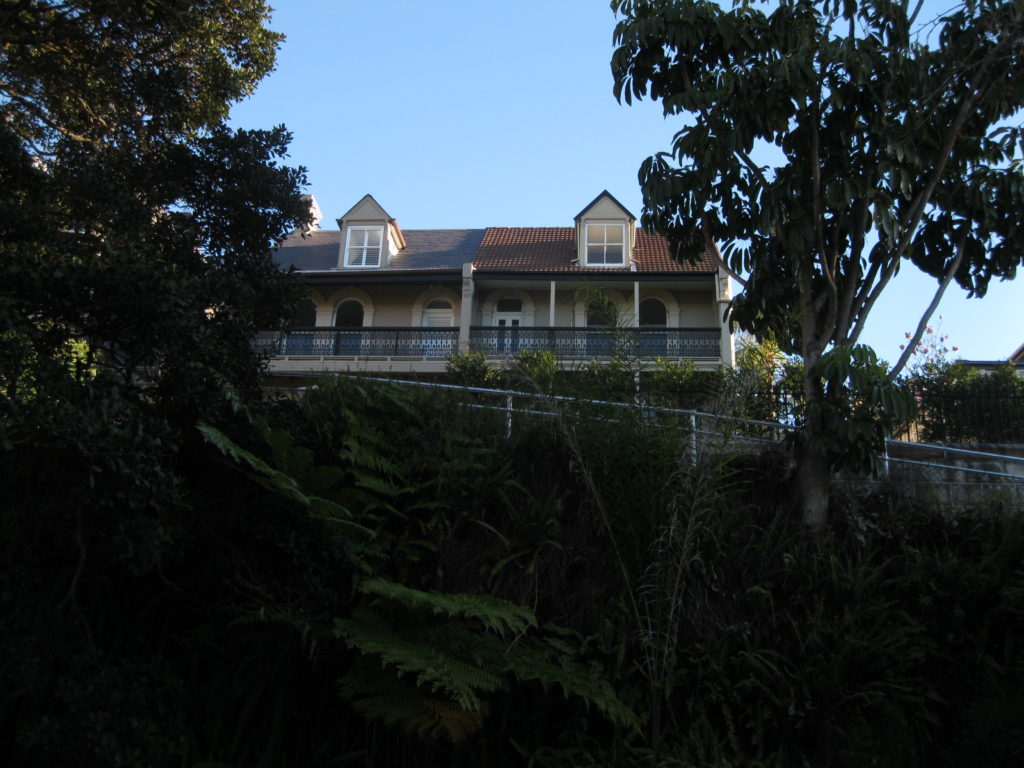
As you head off the bridge on the North Shore you have entered Kirribilli where you will encounter cosy little suburb of small hilly streets. Walking around all the narrow streets and alleys is such a delight. If you mosey down to the shores of Kirribilli you will be approaching a staggering view of the Sydney Harbour Bridge, the City Skyline, the Sydney Opera House along with boats and the Sydney Ferries gently making their way through the waters of the harbour providing an undeniable atmosphere. This is a magnificent vista unlike any other in the world.
Kirribilli is best known for being the official residences of both the Prime Minister and the Governor General. The Prime Minister’s is called Kirribilli House and the Governor General’s is called Admiralty House. Both are located at the far eastern end of Kirribilli Avenue within walking distance to each other.
Kirribilli House
Kirribilli House is the official secondary residence of the Prime Minister located on a perfect spot in Kirribilli overlooking the Sydney Harbour with views of the Sydney Opera House, the city skyline and the Sydney Harbour Bridge.
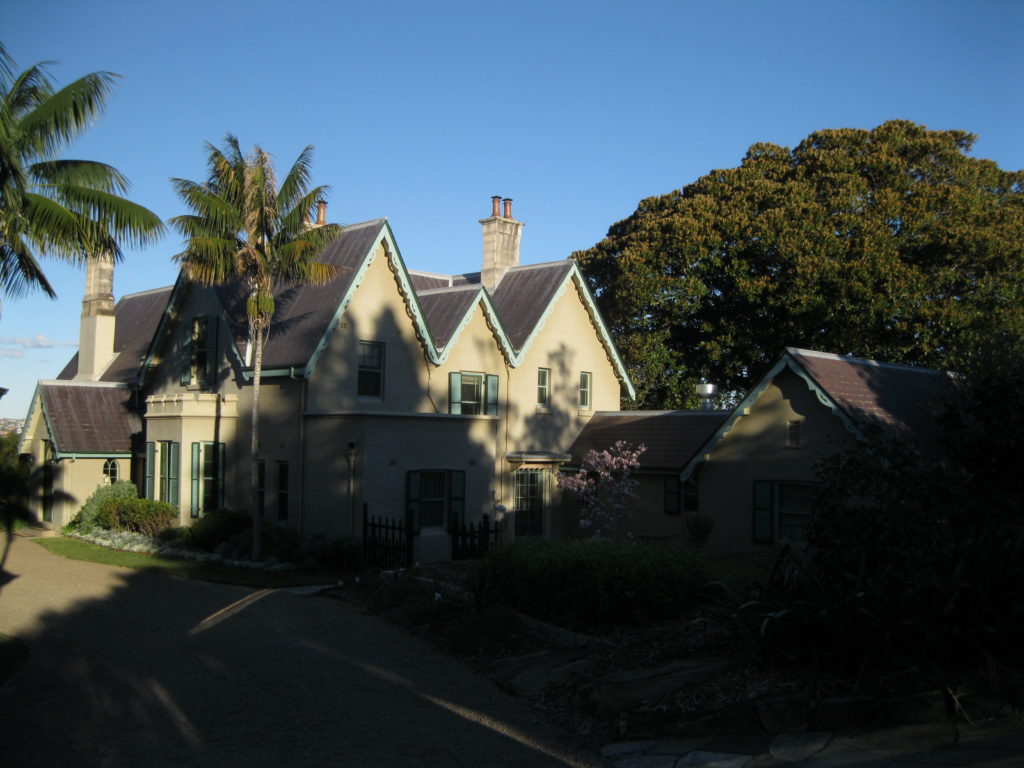
It is a twin gabled gothic structure built in 1854 by Adolphus Frederick Feez, a German merchant and architect who immigrated to Australia in 1851. The building had several owners after Feez sold it in 1858. In 1919 it was purchased by Arthur Wigram Allen who wanted to subdivide the land. After much public agitation William Morris Hughes, the Prime Minister at the time, acquired the property for the government in 1920. Kirribilli House has been used as the Sydney residence for the sitting Prime Minister since 1956.
You can get great view of Kirribilli House up close from the gates at Kirribilli Avenue. It’s a beautiful and appropriately sized residence for the Prime Minister and not too spectacular and grand.
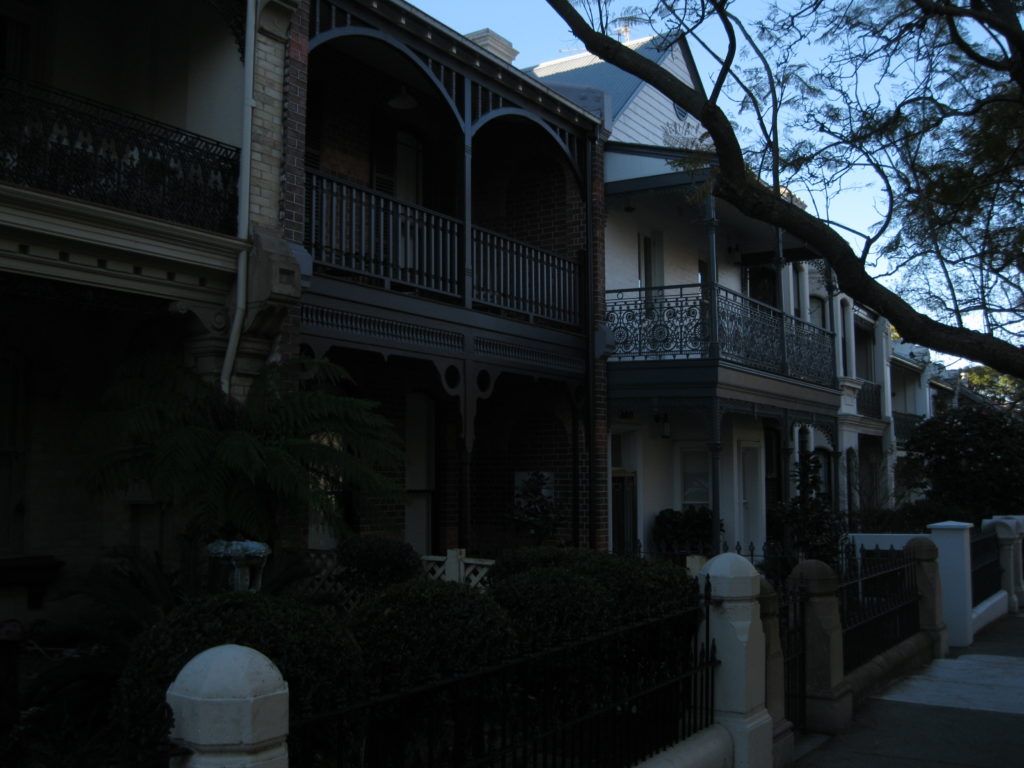
At the end of Kirribilli Avenue, ascending Kirribilli House, there is access to stairs leading down a narrow walkway to the harbour where you can have a bit of a chill on a bench and take in the view. It’s a nice little hidden gem.
Darling Harbour
Darling Harbour is a fabulous area of Sydney. It’s pretty unique not only to have the amazingly beautiful harbour of Circular Quay but also Darling Harbour, both within walking distance from each other. If you’re in the city centre you can easily walk down to Darling Harbour. It’s only a short walk from George Street or York Street, two of the main streets. Turn down at King Street, from George or York Street, and it’s not too far. On the way you will pass bar called Slip Inn on Sussex Street, walk via the walkway crossing the Western Distributor Highway and you’re at Darling Harbour.
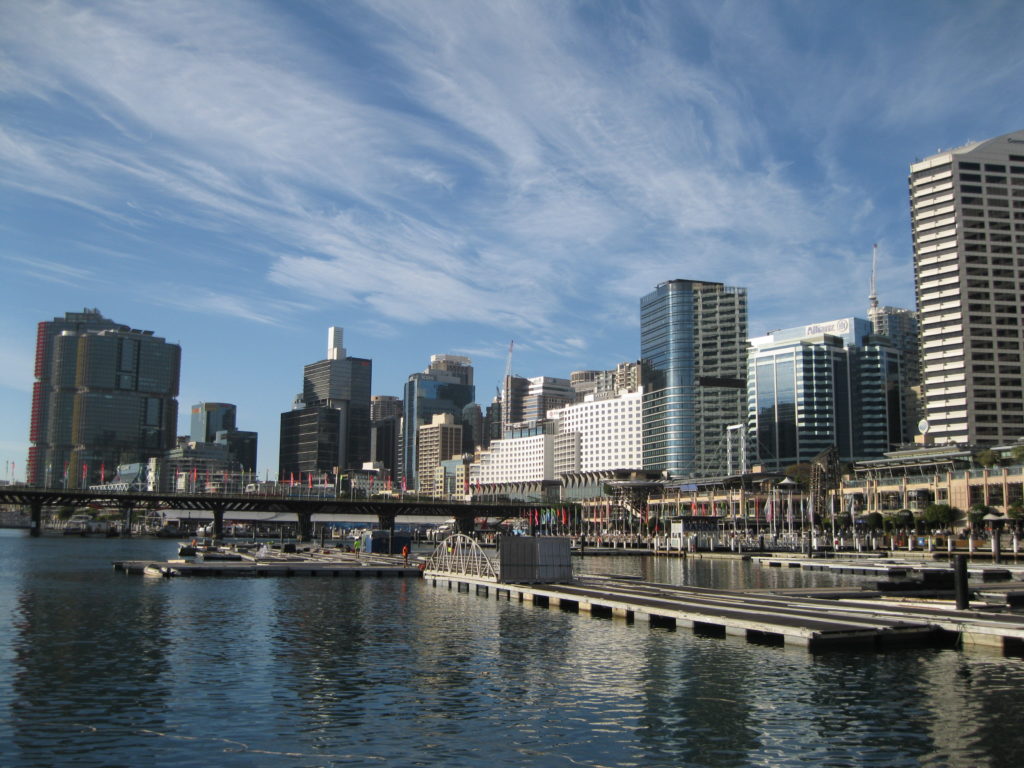
Not only is this area stunning but there are a lot of things to do. The Sydney Aquarium is based at Darling Harbour which is worth a visit. Furthermore the IMAX Theatre Sydney, the Australian Maritime Museum, the Harbourside shopping centre, night clubs and a lot of nice restaurants are all a part of the neighbourhood.
Have a stroll through Darling Harbour. You will be treated to amazing views of the skyline and experience the lively atmosphere with people getting out and about. At night Darling Harbour is a different and fantastic experience. Having a walk around the area or sitting down at a restaurant or bar having a look at the skyline and all the boats sailing around in the harbour is absolutely amazing.
The Star City Casino is located within walking distance from Darling Harbour.
Barangaroo
To the west of the CBD and to the north of Darling Harbour, a new suburb by the name of Barangaroo is located. In 2003 the Government of New South Wales decided that the precinct would be redeveloped from stevedoring and shipping facilities to an area for recreation and commercial offices. The suburb was established in 2007, redevelopment started in 2012 and will be completed in 2023. This will include a hotel, new unit blocks, cultural facilities and a casino.

Barangaroo is beautifully developed full-blown modern neighbourhood with swanky high-rise buildings. If you are into modern architecture it’s an absolute joy strolling around the suburb checking out and photographing the many skyscrapers.
This harbour-side address will transform the city and is set to redefine Sydney’s CBD making Barangaroo a new commercial hub for the Asia Pacific. It is expected that the financial heart of the city will shift from the CBD to Barangaroo.
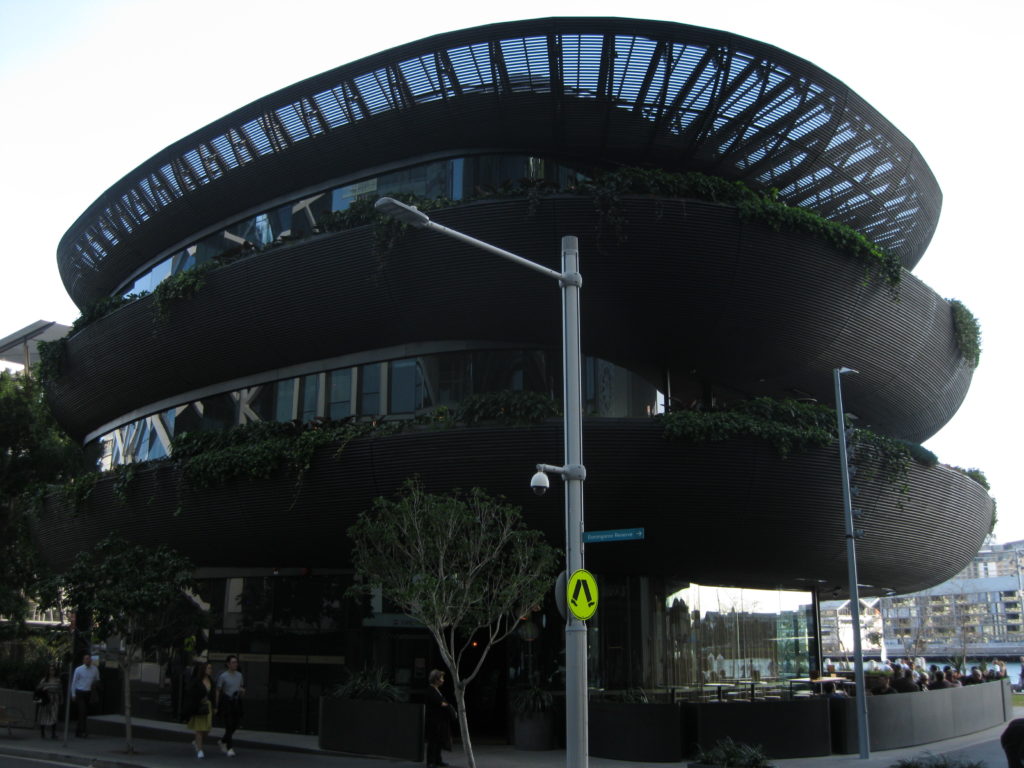
The new waterfront is a vibrant and cosmopolitan destination with restaurants, cafés, retail and a hotel. There will be retail businesses for both visitors and workers, creating a benchmark and making a perfect place to work. It has become a city within the city.
The regeneration of Barangaroo is one of the biggest ever in Sydney. Investments have been made to make the suburb well-connected to the rest of the city with a new ferry terminal, the pedestrian Wynyard Walk link to main rail network, a new bus route and cycle paths.
International Towers Sydney
Three skyscrapers that stand out in the Barangaroo skyline which are the International Towers Sydney at Bangaroo Avenue 100-300. These three sibling buildings have varying heights and individual design features giving them each their own identity. The colours and arrangement of the vertical solar shades on the exterior façades are different giving each structure a distinct look.
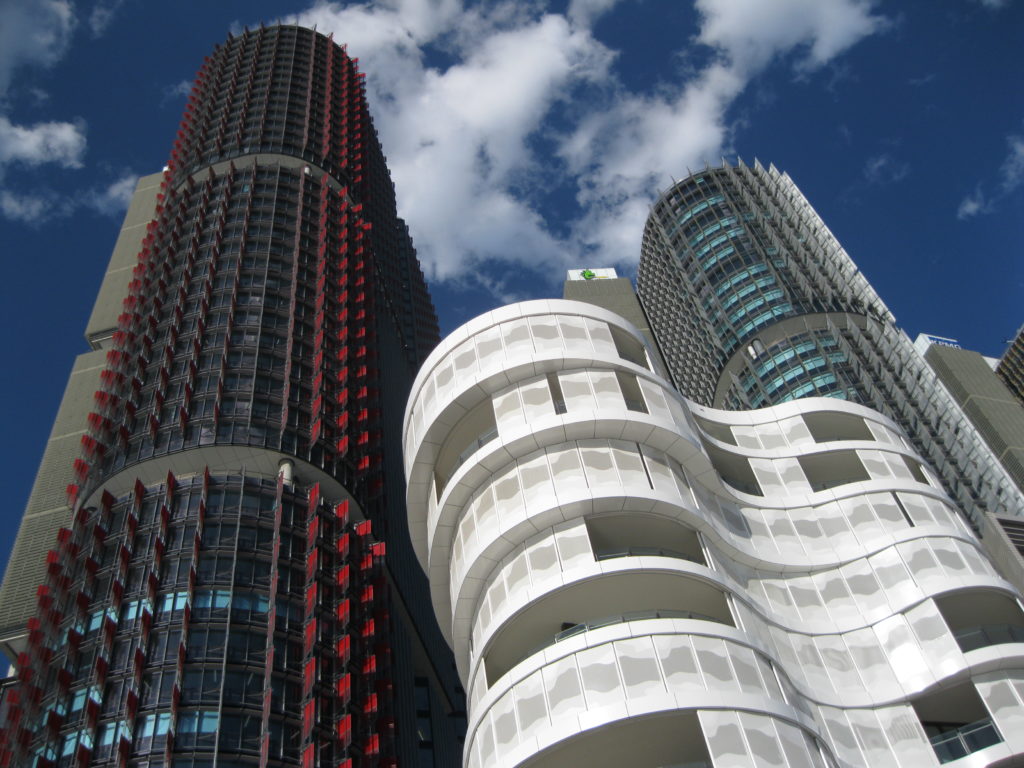
The whole complex was completed in 2016 and will be the core of the residential, retail and leisure development of the suburb. The three towers are each known as 1, 2 and 3.
Tower 1 is the tallest at 217 metres (712 ft) with 49 floors.
Tower 2 is the second tallest at 178 metres (584 ft) with 43 floors
Tower 3 is a 168 metre (551 ft) tall structure comprising 39 floors.
The International Towers Sydney will be a major centre for financial and professional organisations. Sustainability is a big part of the concept and is set to be a carbon neutral place.
Barangaroo Reserve
Barangaroo Reserve is a recreational space on Sydney’s foreshore. It’s a part of the Barangaroo redevelopment that transformed what was once an inaccessible industrial dock just minutes away from the heart of the city. It’s for locals and visitors to enjoy with bike tracks, walking paths, rock pools and picnic areas. The park has more than 70,000 native plants designed to replicate the environment prior to settlement.
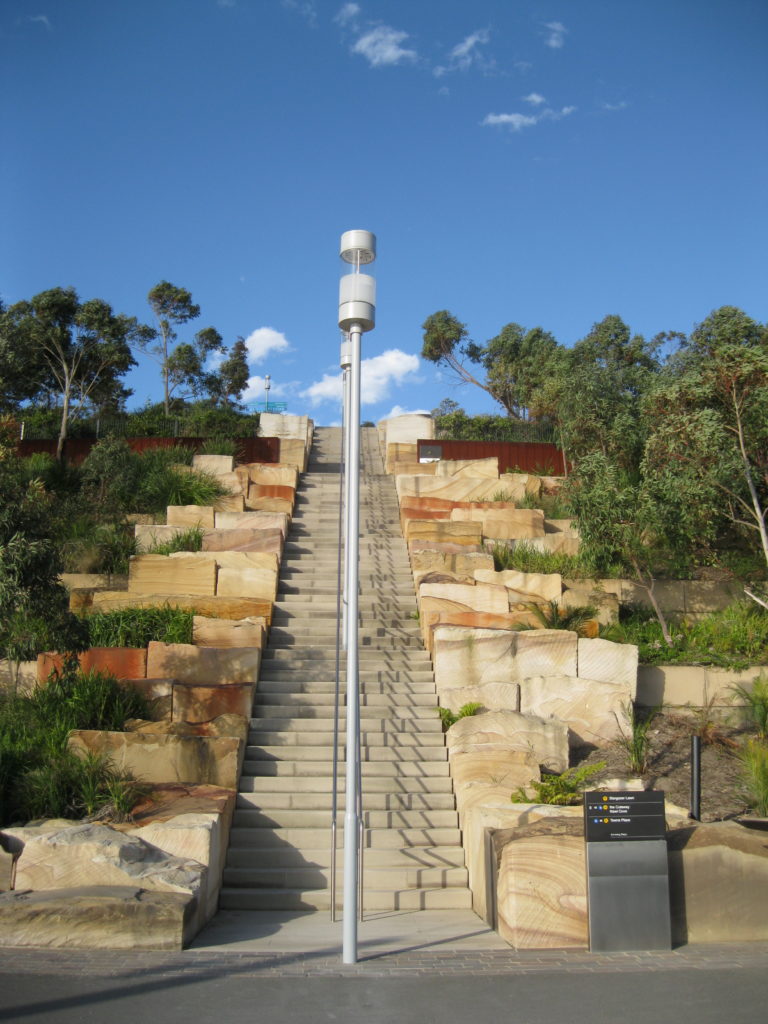
Taking a stroll through Baranagoo Reserve is an absolute delight as you will be heading through a beautiful and well-maintained setting. At the very tip the tip of the park, you will be set for a fabulous view of North Sydney, Balmain and the Sydney Harbour Bridge. A perfect vista and photo opportunity you didn’t have a few years ago.
Barangaroo & Bennelong: Aboriginal Legends
The name Barangaroo was taken from a strong Aboriginal woman of the same name who lived in the 1700s and was a member of the Cammeraygal clan. She was married to Woollarawarre Bennelong, a name which is more familiar to most Sydneysiders, as Bennelong Point is the location of the Sydney Opera House. He was a senior man of the Eora Aboriginal tribe.
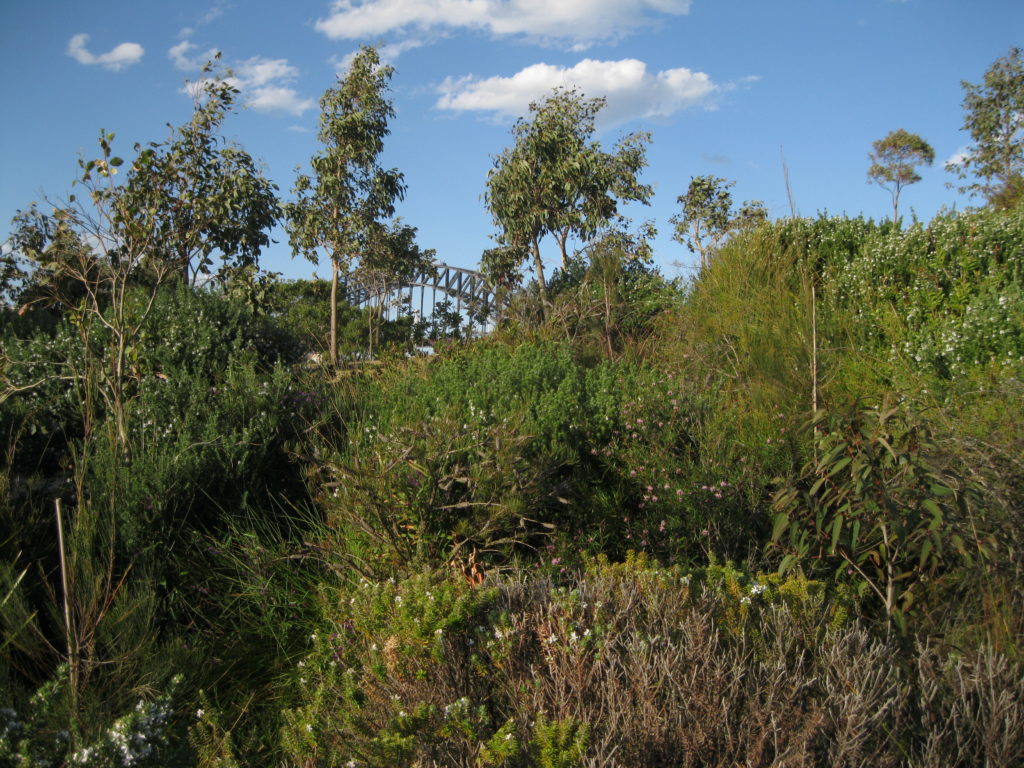
They were married when major changes were occurring within the harbour with the arrival of the colonists in 1788. Bennelong was trying to be a broker and liaise with the British, but Barangaroo did her best to keep her culture strong and keep her people together
The ANZAC Bridge
The Sydney Harbour Bridge may be the great landmark bridge in Sydney, but the second major bridge in Sydney is the ANZAC Bridge which is quite impressive in its own right as well. It is the longest span cable-stayed bridge in Australia with a total length is 805 m (2,641 ft). The bridge design is awesomely simplistic with its pylons and cables that stand out in the cityscape as a fabulous monument.
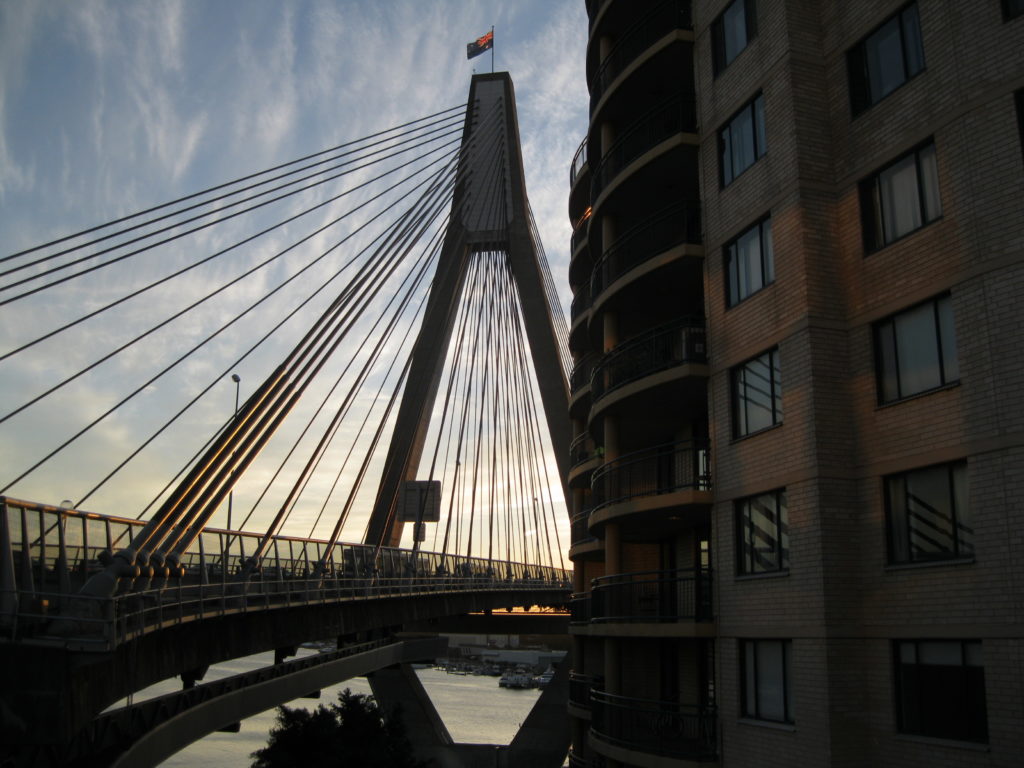
As with the Sydney Harbour Bridge you also have the opportunity to walk across the ANZAC Bridge which is highly recommended. A great option could be visiting Darling Harbour and continue onwards through the suburb of Pyrmont. It’s a bit of a challenge finding the pedestrian access point to the bridge. Head towards Bank Street and turn to the left down Quarry Master Drive and you will see the big spiral walkway up to the bridge. You can’t miss it.
As you cross the bridge you will not only have the great sight of the bridge itself but also views of the city skyline behind you, Rozelle Bay and Backwattle Bay to one side and Balmain to the other side. Absolutely amazing, a great experience and a very satisfying stroll across the bridge. When you’ve completed the hike across you have arrived in the suburb of Rozelle.
The Northern Beaches: Cool Beaches, Amazing Scenery and Great Buzz
The scenery of the Northern Beaches is absolutely beautiful with places such as Curl Curl, Freshwater, Dee Why and the stunning Manly.
Manly Beach
The suburb of Manly and Manly Beach are one of the highlights in Sydney. The surrounding area of the beach is fabulous with the promenade along the beach side and the mall called The Corso.
You can easily get to Manly from Circular Quay which is a fantastic scenic ride and is highly recommended. On the way you get perfect views of the Sydney Opera House, the Sydney Harbour Bridge, Circular Quay, the city skyline, Kirribilli and different parts of the harbour. The ferry arrives at Manly Cove and from here it’s just a short walk through the Corso down to the beach. This is a really great way of sightseeing through town from the harbour and the harbour towards Manly.
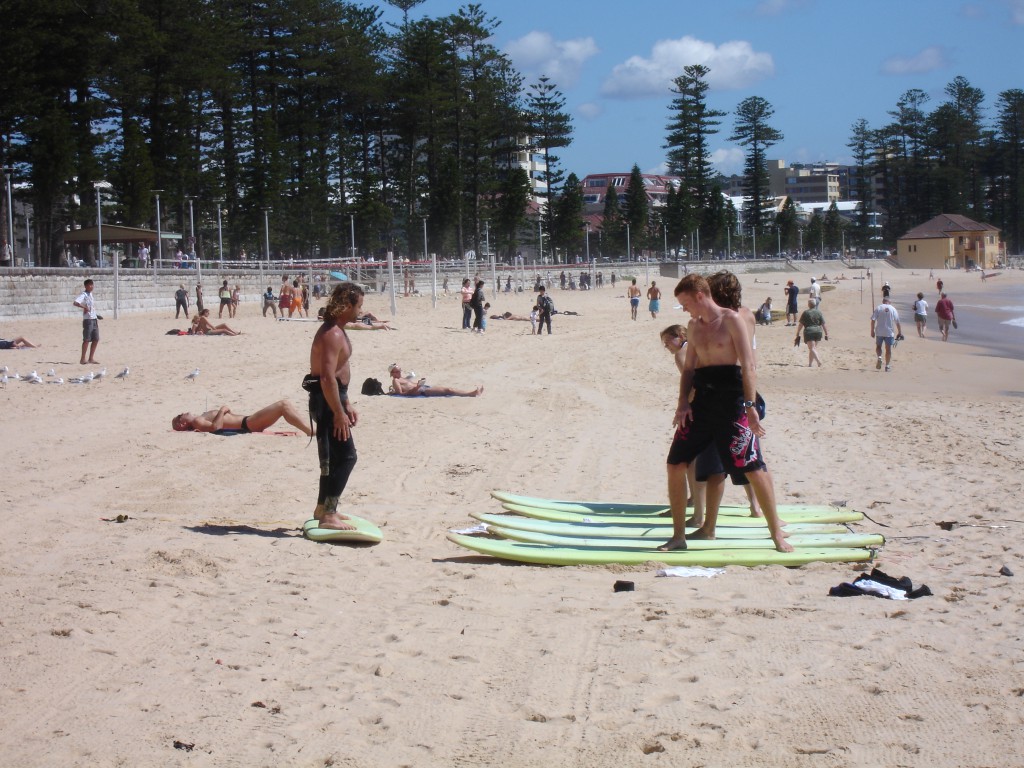
The Corso is the pedestrian mall leading down to the beach with shops with surf wear, eateries, pubs and café, all providing an amazing buzz making it such cool place to have a hang. Soak in the awesome beach lifestyle of Manly Beach among surfers and people playing beach volley. At the promenade you could chill out as well and have a picnic.
The beach curves from South Steyne to North Steyne and Queenscliff submerged by a reef that creates amazing waves and attract many surfers.
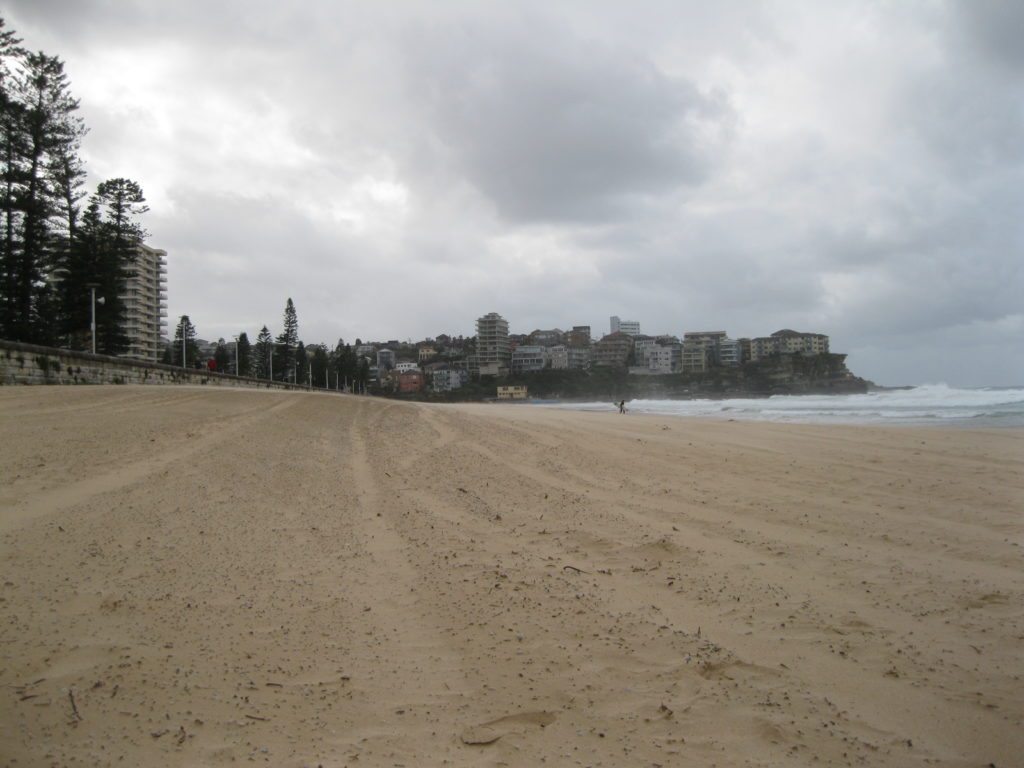
Manly Beach hosts different activities such asbeach volley tournaments. Manly Surf School is also based on the beach. Taking surf lessons is great fun. It is very difficult to grasp how to surf if you’ve never tried before but you will have a great experience like no other and get your adrenaline kicking in. You should definitely go for it if you are up for a bit of adventure. So there are plenty of options for indulging yourself in amazing activities.
Freshwater Beach
If you want to visit a small, cosy and peaceful beach then pay Freshwater Beach a visit. It is the neighbouring beach of Manly Beach and walking from Manly to Freshwater is a fantastic hike. Head down to Promenade at Manly Beach, continue northbound down to the very end of the beach, then onwards to North Steyne Street which extends into Bridge Road that leads into the suburb of Queenscliff.
There will be a lot of meandering to get through this small neighbourhood via Greycliff Street, back to Bridge Road, Queenscliff Road, Pavilion Street and then back to Bridge Road yet again. It’s an awesome hike as you get to see a beautiful residential area of Sydney with great views of the cliffs and the sea. Follow the walkway down to Undercliff Road and you are in the suburb of Freshwater. From here it is just a short walk down to Freshwater Beach.
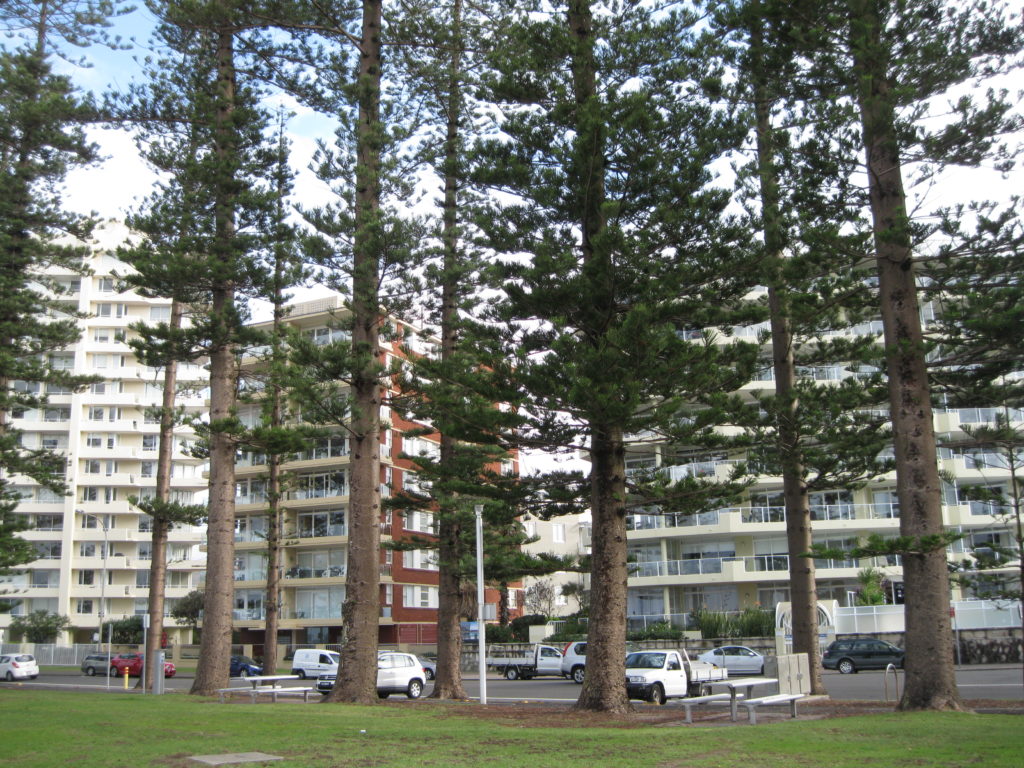
This is such a cool little spot. The beach itself goes a bit deeper inland than Manly Beach but it is pretty small. The beach is based between two massive cliff headlands. When standing on the beach looking back at the residential backdrop you will have a fantastic view of some beautiful properties with great sea views. Absolutely awesome.
Go in the evening as well and check out the view. Have dinner at the Harbord Beach Hotel which is a cool spot. Afterwards take a short stroll down to the beach and check out the view of the houses behind you all lit up in the evening. It’s a stunning view and nice to have walk on the beach and feel the breeze.
Curl Curl
To the north of Freshwater Beach, the suburb and beach of Curl Curl is located. If you are up for it, you could continue the walk from Manly Beach to Freshwater Beach and onwards to Curl Curl Beach. You will be making you way through hilly streets and cosy residential areas. This is a neat and different way to experience the northern suburbs and beaches.
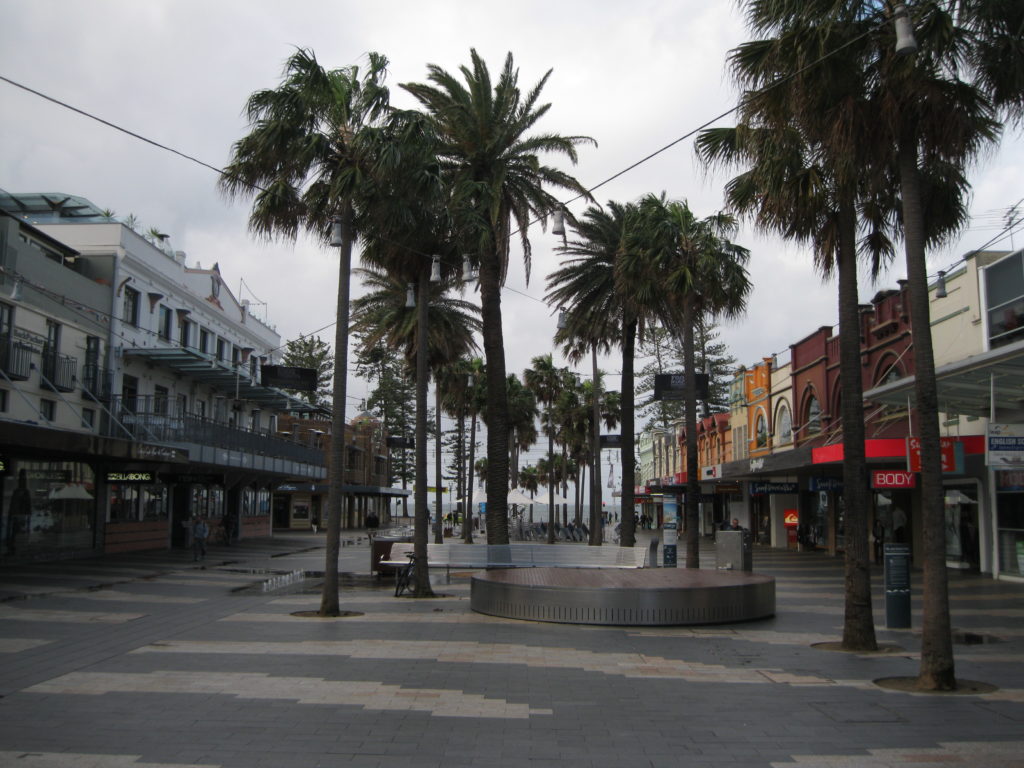
Curl Curl Beach is a wonderful spot and bigger than Freshwater Beach. It is not as crowded as Manly Beach as it doesn’t have a mall area and the same transportation fascilities, so if you prefer a more quiet beach to have a bit of a chill, Curl Curl is the perfect place. It is also a magnificent destination for surfing. As it is not overly packed with people you will have plenty of space to catch a wave. Surf’s up!
The name “Curl Curl” derives from Aboriginal. It is believed to be the original name for the area covering Manly Vale, Freshwater and Queenscliff, and could have originated from the Dharuk Aboriginal phrase “curial curial” that means “river of life”.
Dee Why
Another gorgeous beach on the North Shore is Dee Why which, along with Brookvale, is considered the main centre of the Northern Beaches due to the location of the local government of the Northern Beach Council.
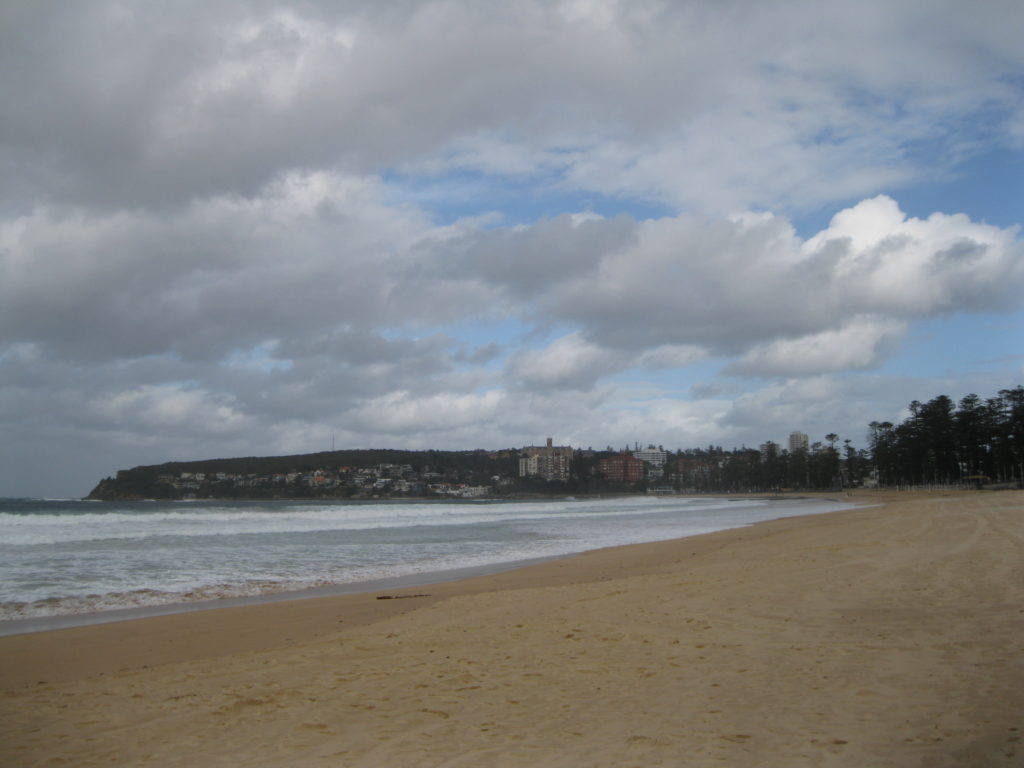
Dee Why Beach is about 1.2 km (0.8 miles) long with dunes to the north separating it from Dee Why Lagoon. The beach has a picnic area with Norfolk Island Pine trees similar to the ones at Manly Beach.
Dee Why has a commercial area located around Pittwater Road, the main road on the Northern Beaches. There are four supermarkets and an RSL making is quite a busy suburb.
Mona Vale
Mona Vale is one of the biggest and most popular of the northernmost Northern Beaches. It’s located 28 km (17.5 miles) north of the Sydney CBD and is accessible by bus. A parking area is also based right at the beach if you have your own vehicle.
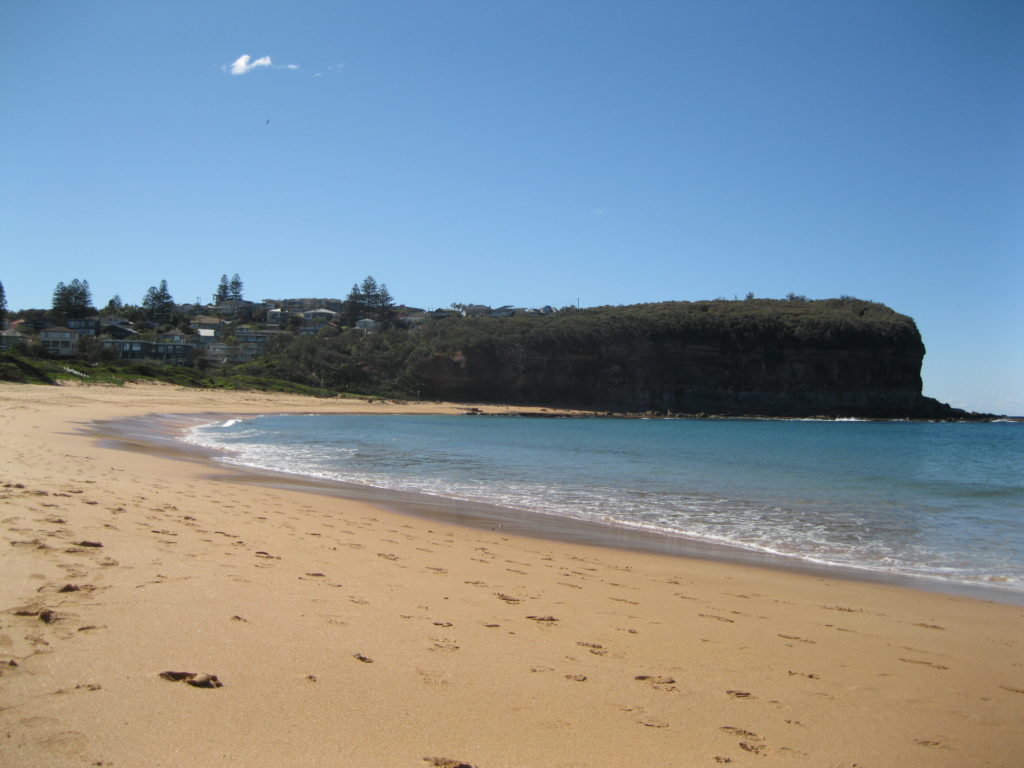
It’s a cosy little suburb and worth a visit to check out the beach or have a meal at one of the cafés in town. Have lunch and take a stroll down to the beach to check out the surroundings. The beach area is at a marvellous setting with a headland at each end.
Mona Vale Beach can be quite shallow and when it is, it has a large section of rocky outcrops, which are in a nice setting surrounded by the beach. It’s cool to take a stroll out to the tip of the outcrops and take pictures of the massive headlands on each side encompassing the beach.
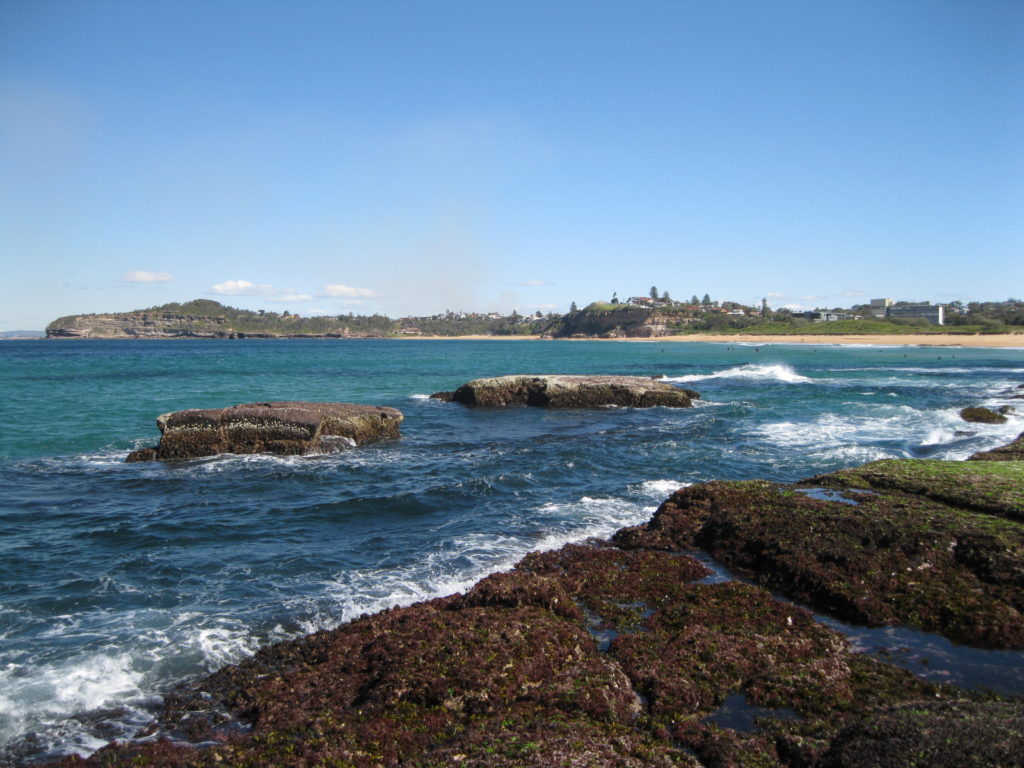
Head down to the eastern end and walk up the path to the top of the headland to a vantage point called Turimetta Head Lookout. Here you will have a fantastic view of Mona Vale to one side and down towards Turimetta Beach, Narrabeen Beach, Collaroy Beach and all the way to Manly Beach on the other side. Stunning views. Bear in mind that it can get pretty windy up there.
Cammeray
The suburb of Cammeray is adjacent to North Sydney and St Leonards Park to the north. It used to be a quiet little suburb with small city centre located around Miller Street with shops and restaurants. In recent years this has become much more of a happing place.
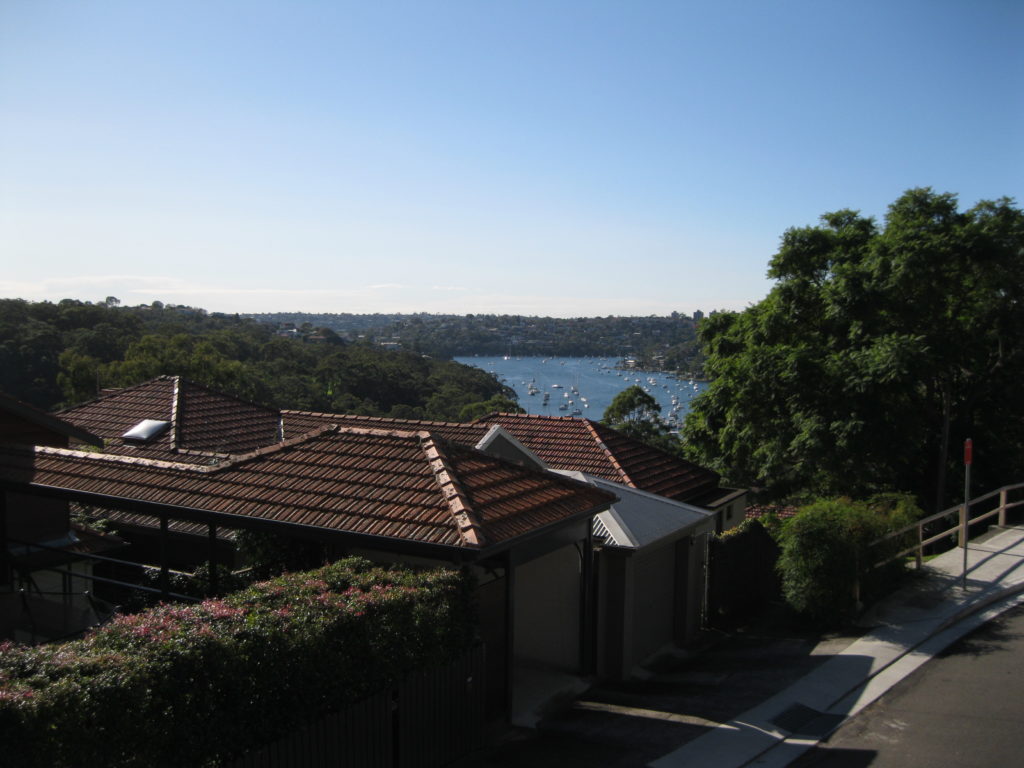
North of Warringah Freeway on the corner of Amherst and Miller Streets, a big hardware used to be located, but after it was demolished and the Stockland Cammeray Shopping Centre was created, the place started attracting people and became more lively. Trendy restaurants and cafés started popping up and really complimented the area.
A fascinating aspect about Sydney is that a lot of the suburbs outside the city centre have many hidden treasures not many people are aware about. This goes for both locals and tourists. Cammeray is a great example with the beautiful Folly Point and the Pimrose Park Walking Track.
Cammeray: Folly Point and the Pimrose Park Walking Track
If you are up for checking out Cammeray, you could start by having breakfast or lunch at a café and then go for a hike further down through the neighbourhood towards the harbour. This way you get to explore this wonderful area, a part of Sydney not many people experience, and you will get yet another unique view of the harbour.

Head down Amherst Street to Cammeray Road passing the Cammeray Golf Club along the way. It’s a bit of a hilly walk, but that is a part of the charm of strolling around Sydney. On your little journey you will have view of hilly streets in the distance and well-maintained houses and gardens. Continue down Cammeray Road to the very end and you will arrive at the beautiful Folly Point. This is at the very tip which will provide you with an impressive view of the middle harbour and Willoughby Bay under the Sheoak trees and remnant Blackbutts.
Have a chill here and check out the view as it is a fair walk meandering down the hilly Cammeray Road. When you are ready, head a bit back up the road again until you get to the Pimrose Park Walking Track. This track is a part of the North Sydney’s Harbour Foreshore Bushwalks. Fortunately there are still several areas of bushland left in northern Sydney with natural beauty and stunning views.
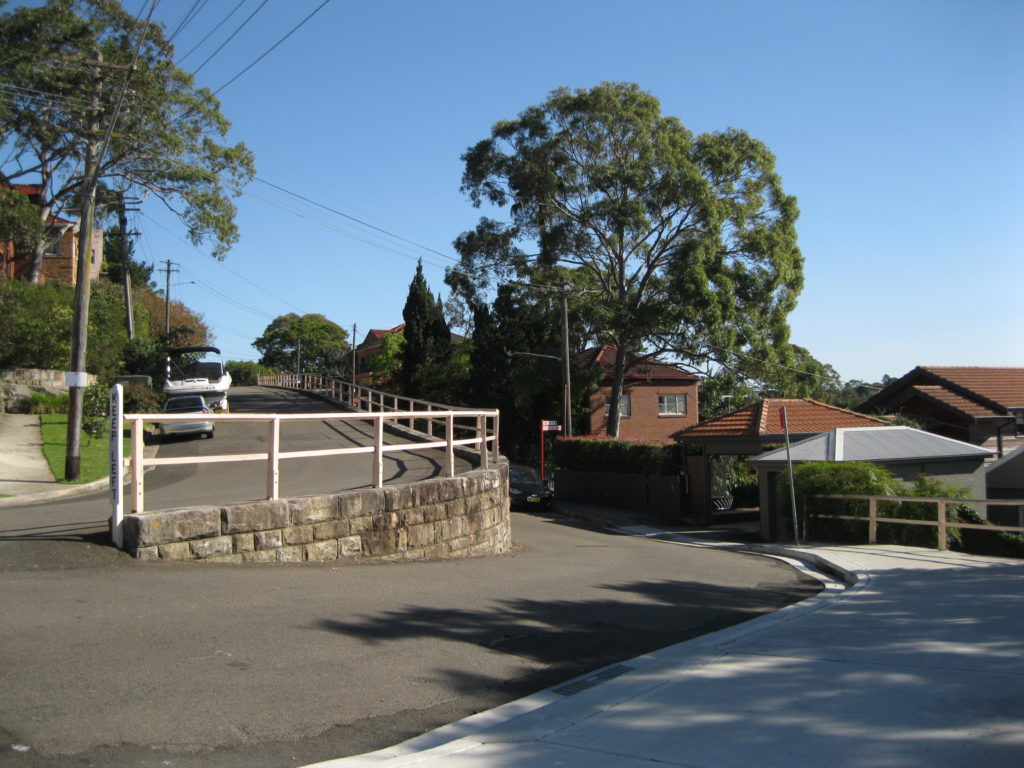
The Primrose Park Walking Track is a great example of one of the bushwalks you can do on the North Shore. You will be heading through a track of mainly bushlands combined with a bit of parkland. It’s a gentle walk for about 20 minutes through a level path to the tennis courts at Pimrose Park. The hike continues for about 10 minutes up a steep incline over rocky outcrops from Willoughby Falls to Grafton Street and back down a zig zag track to the tennis courts.
On the trail you will be exposed to some beautiful flora and fauna from Tree Ferns and the Black Wattle canopy around the waterfall. The indigenous bush provides perfect living conditions for abundance of wildlife such as a great diversity of birds.
It’s a nice little hike and a great way to experience a different part of Sydney that not many people see
Neutral Bay
Neutral Bay is another suburb on the North Shore which is worth checking out. All the way down Military Road through the neighbouring suburbs Cremorne towards Mosman you will find a lot of different interesting shops and restaurants.
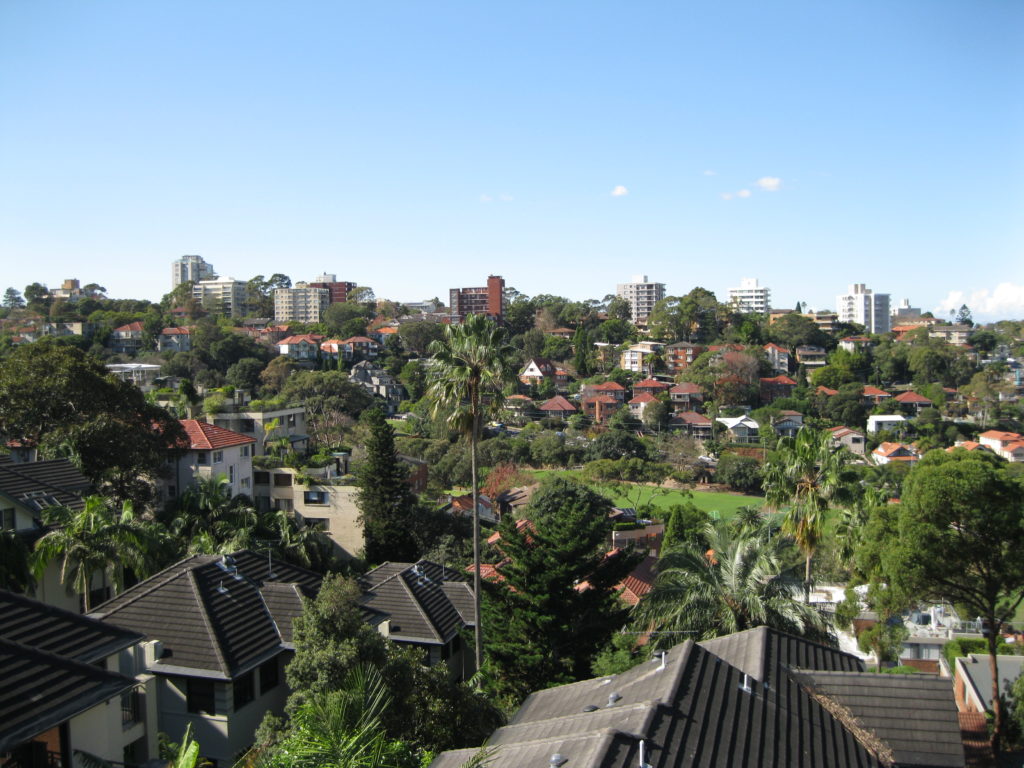
Neutral Bay together with the suburbs of Cremorne and Mosman are actually quite interesting to explore. Head down towards the harbour through its curved and hilly streets. The further you get, the better you view will be of the city skyline, the harbour and the Harbour Bridge as well.
The Oaks Hotel
One of the city’s most famous pubs is located in Neutral Bay at 118 Military Road and is called The Oaks Hotel. This is a great place if you want to have a night out on the town with your mates for a meal, a drink, watching sports, playing pool or just having a chill.
Many pubs are referred to as hotels as they used to be hotels. This is also the case with The Oaks which has been around since 1885. The establishment is split into several awesome sections. The ground floor is divided into two different bar areas. One is facing Military Road and the other can be accessed from Ben Boy Road with an adjacent outdoor garden bar where you can enjoy a beverage in cosy surroundings under the massive oak tree from which the hotel got its name. Neighbouring this section is the indoor restaurant.
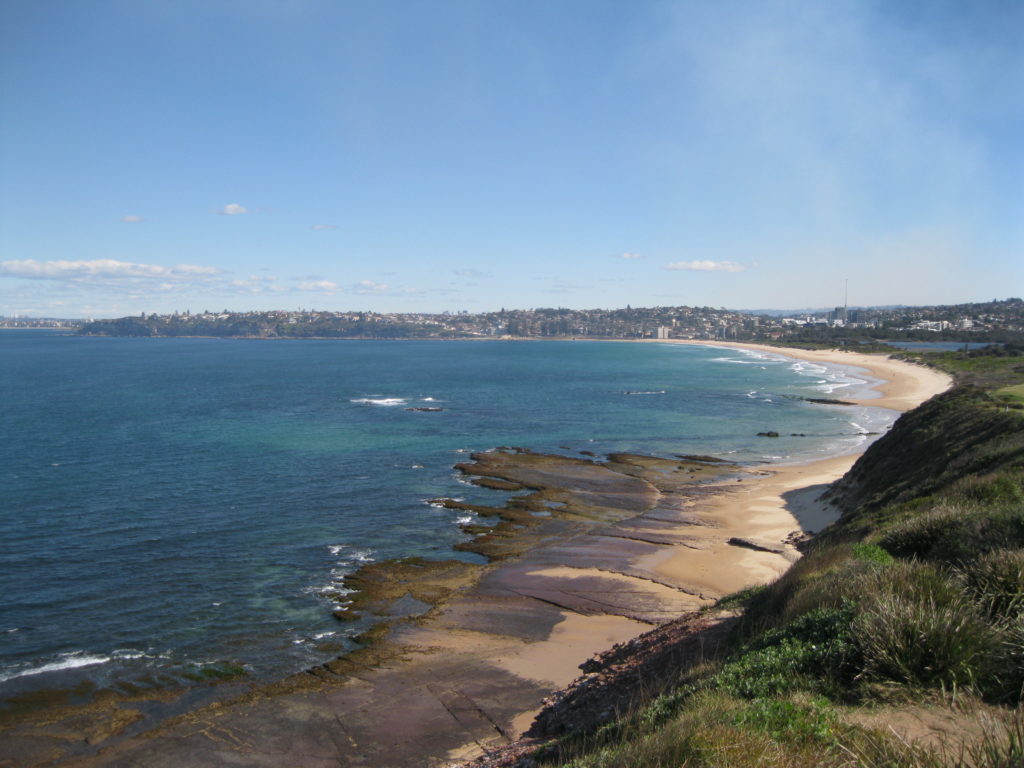
On the first floor the Cue and Cushion Bar is situated with pool rooms and function spaces with a terrace all designed in the style of Art Deco. It’s a perfect spot for a hang before dinner at the restaurant or just for a good night out on the town with your mates. The Oaks Hotel has a good selection of great Australian craft beer, also referred to as boutique beers in Australia, which is a field they have just ventured into in recent years and are doing really well. Not many years ago the most exciting beer and brewery in Australia was Coopers. It is still a great drop, but the selection of good brew as certainly improved in recent years.
Mosman
Mosman is one of the major suburbs on the Lower North Shore and is an upscale harbourside neighbourhood. Military Road, the main road going through Neutral Bay, Cremorne and Mosman, has many popular boutiques and cafés which extends down to Spit Road as well.
Mosman forms a peninsula between Sydney Harbour and Middle Harbour. It features a number of harbour beaches where Balmoral Beach is best known.
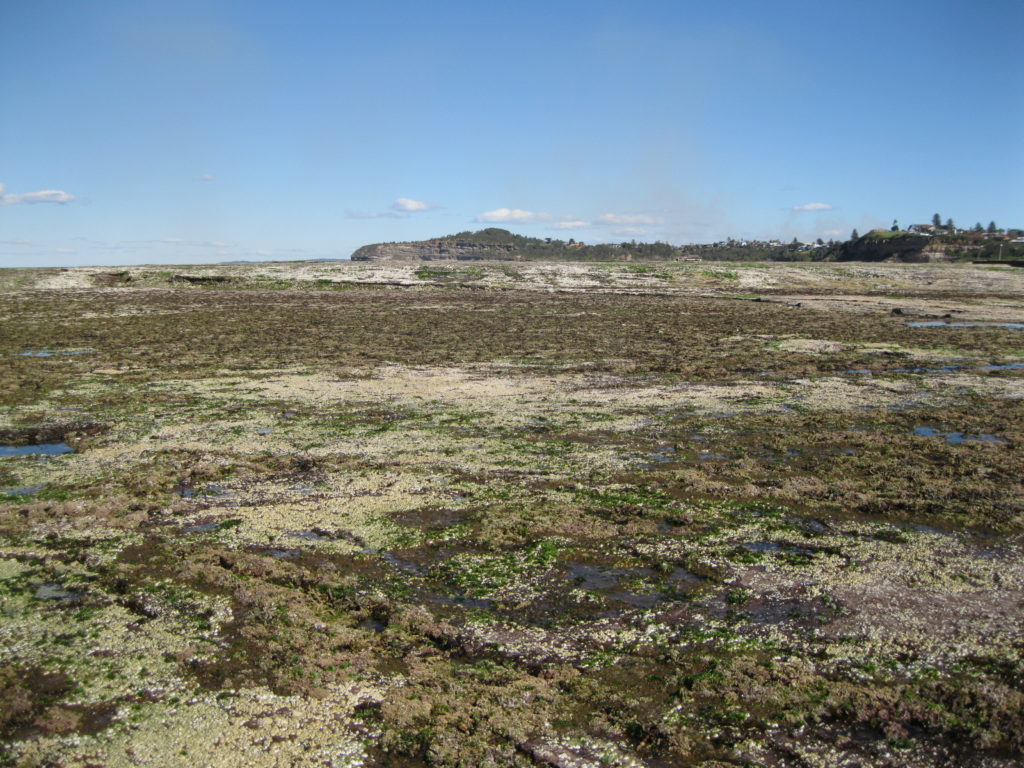
Having a stroll around Mosman is such as delight with its the hilly residential and commercial streets. The three highlights of the area are Taronga Zoo, Balmoral Beach and The Spit.
Taronga Zoo
Taronga Zoo is located in the suburb of Mosman. There are two awesome ways to get to the zoo.
You can either take the F2 line from Circular Quay which will provide some awesome views of the harbour, the Sydney Harbour Bridge and the Sydney Opera House on the way.
If you are exploring the suburbs of Neutral Bay and Mosman already, head down to the south of Military Road through either Neutral Bay or Mosman towards the zoo. The hilly streets and terrain is quite hard to hike through but the scenery is really beautiful with all the residential housing around the different curves and bends. Great views of the city skyline and the Sydney Harbour Bridge will become apparent as well across the harbour as you meander your way through towards Taronga Zoo.

The zoo was opened in 1916 with more than 4,000 animals of 350 species. You can easily spend a couple of hours here chilling out checking out both the animals, sometimes against the city skyline across the harbour, but also interesting architectural aspects such as the Rustic Bridge and the beautiful old entrance to the zoo.
Balmoral Beach
Balmoral Beach located in the suburb of Mosman is a lovely beach with calm waters. It is therefore not suited for surfing but perfect for sunbaking, beach football, a swim or a picnic on the beach itself or at the picnic area.
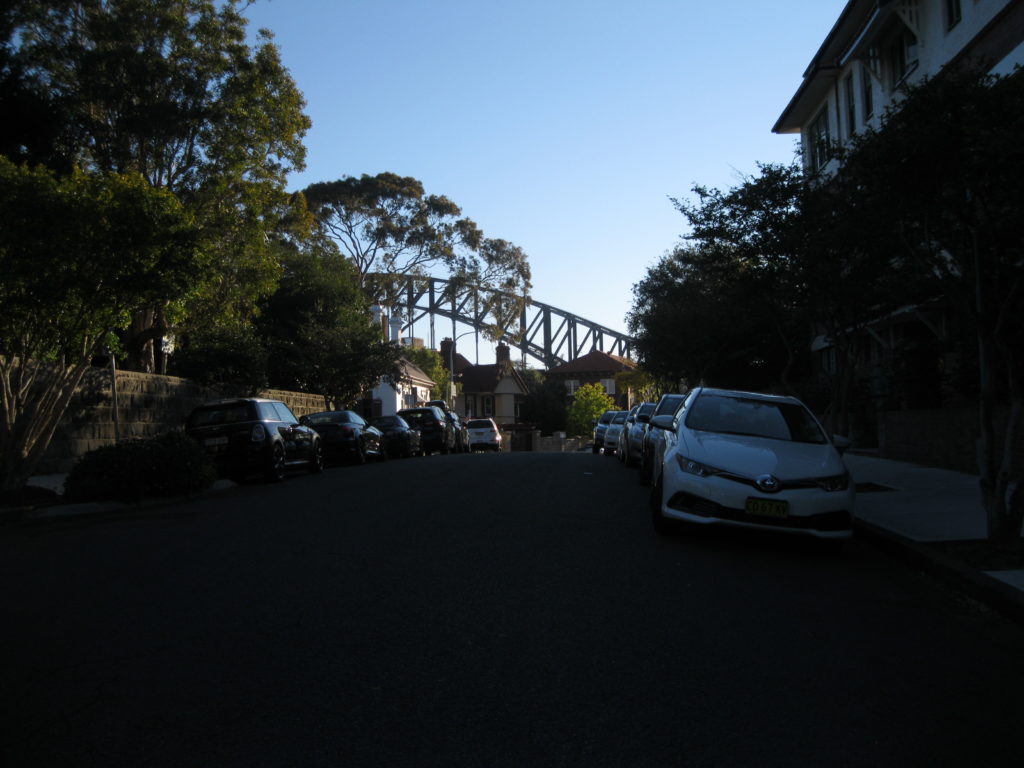
There are eateries along the beachside, if you are up for some grub, on The Esplanade, at the Balmoral Boatshed or at the Bather’s Pavilion, a heritage-listed building from the 1920s. You could also hire kayaks, sailboards or stand-up paddleboards. There are plenty of options for either an active or chilled out day at the beach.
The Spit
In the Middle Harbour on the North Shore, the residential area the Spit is located. Set at a stunning setting is based in Mosman with the Spit Bridge leading into the neighbourhood when entering from the north. The bridge connected The Spit in Mosman with the suburb of Seaforth.
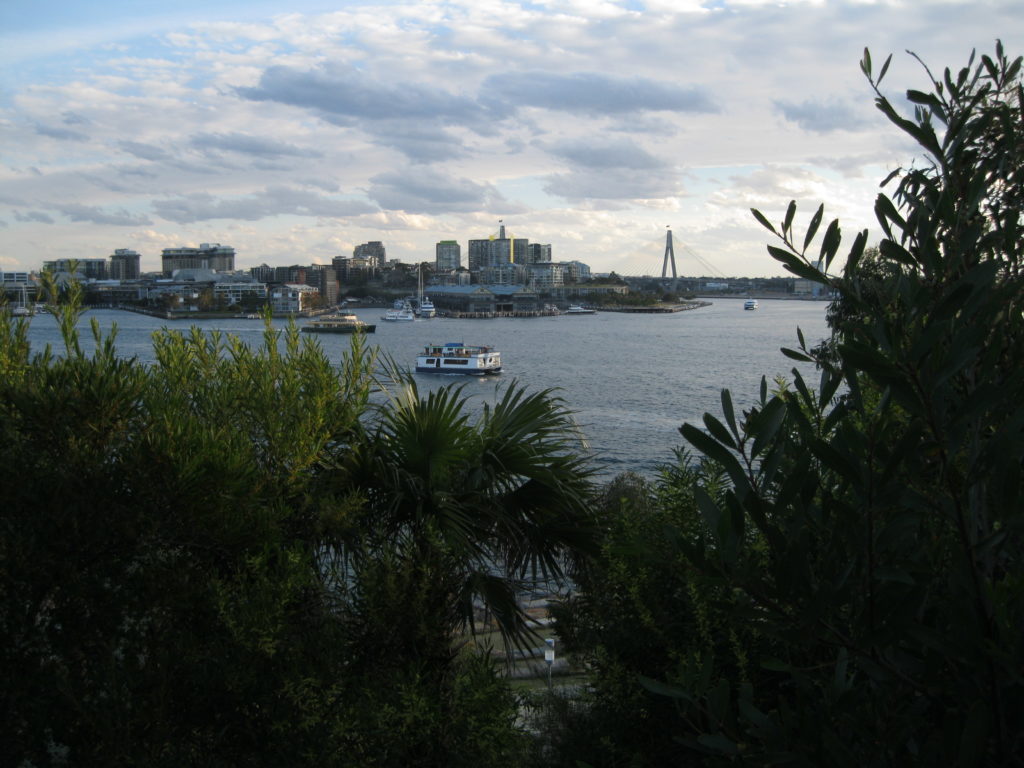
The setting around the Spit Bridge is an assault on the senses. It is a striking spot with a marina of yachts, restaurants and amazing structures all the way up the hilly slopes on the Seaforth side which you will notice when coming from the south. There are several of opportunities for water sports and a good time with boating facilities, kayaks for hire and even a picnic area. Giving the area a nice Riviera-like buzz.
Heading down the Spit Road and across the Spit Bridge is also a great scenic route if you are heading towards Manly Beach.
The Manly Scenic Walkway
The Spit Bridge to Manly Walk or the Manly Scenic Walkway starts from the Spit Bridge. If you are into hiking you should definitely do the walk as it will lead you through some breathtaking scenery. It’s a bushwalk of 9.1 km (5.7 miles) along the shoreline of the Middle and North harbours from the Spit Bridge all the way down to Manly Wharf.
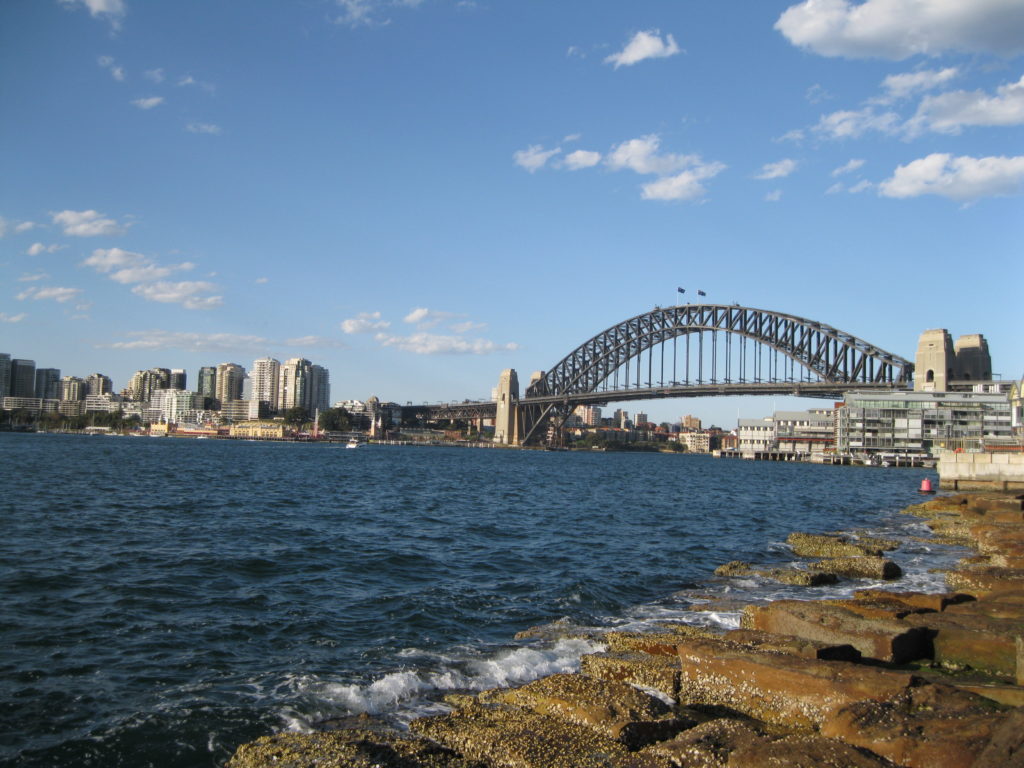
It’s a great walk and not strenuous as the track is well-maintained. On the way you will be treated to great vistas of beaches and natural bushland. Side trips are possible to Grotto Point and Arabanoo Lookout. There are also opportunities to get some grub at a couple of places on the way.
Chatswood
Chatswood on the North Shore is a suburb known for having a lot of different opportunities for shopping. It is easily accessible by car or by train to Chatswood Station. If choose the latter option, the pedestrian mall on Victoria Avenue is located in continuation of the train station.
Both the Westfield and the Chatswood Chase Shopping Centres are within walking distance from the train station where you will find plenty of options for a shopping spree.
Chatswood is also a commercial area with a fair bit of high-rise buildings.
Crows Nest
If you are on the North Shore and you want to go for a drink or a meal during the day, or if you want to have a night out on the town, Crows Nest is definitely a great option.
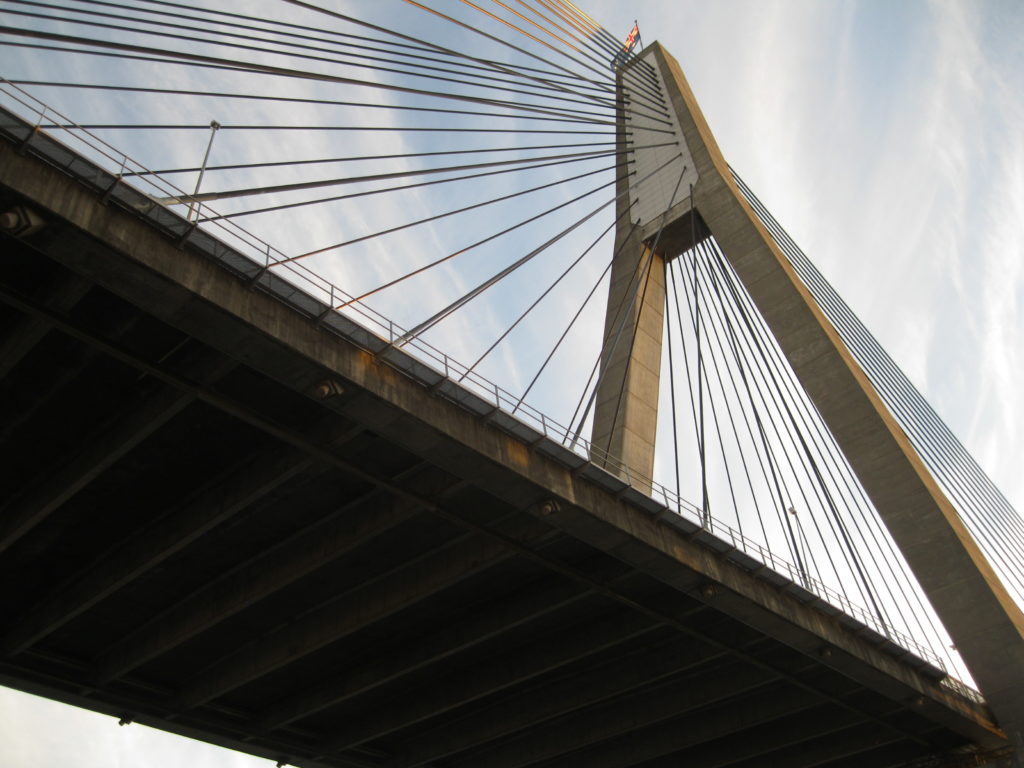
The suburb has an abundance of pubs, restaurants, café and bistros, most of them are based on Willoughby Road. You can have a great pub meal and listen to live music, all adding to the vibrant atmosphere of the neighbourhood. The Crows Nest Hotel is a great example of a cosy pub based in the area.
On Willoughby Road you will find a great variety of shops. It’s a good place for a stroll or a shopping spree.
North Sydney
North Sydney is a suburb of the lower part of the North Shore which mainly is a commercial district. On the northern part of Miller Street you will find a nice little breathing space called St Leonards Park. It is based right next to it the local cricket ground, called the North Sydney Oval.
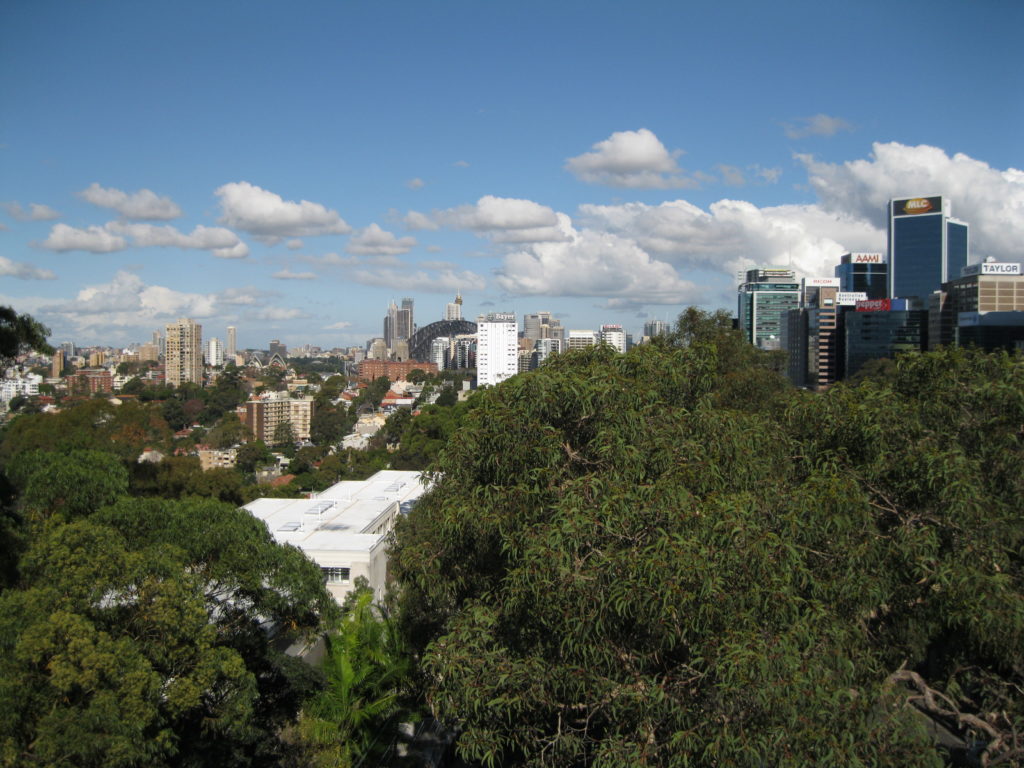
Further down Miller Street towards the harbour at the intersection with Pacific Highway the Greenwood Plaza is located which is cool little underground shopping mall. It’s got pedestrian entrances from Miller Street and Blue Street and is linked with North Sydney train station.
Take a stroll down Miller Street southbound towards the harbour you will find a lot of nice bars, restaurants and shops.
McMahons Point
If you are in North Sydney and head south bound to end of Miller Street it will extend into Blues Point Road which continues into the suburb of McMahons Point. Walk all the way down to the very end where Blues Point Reserve is located.
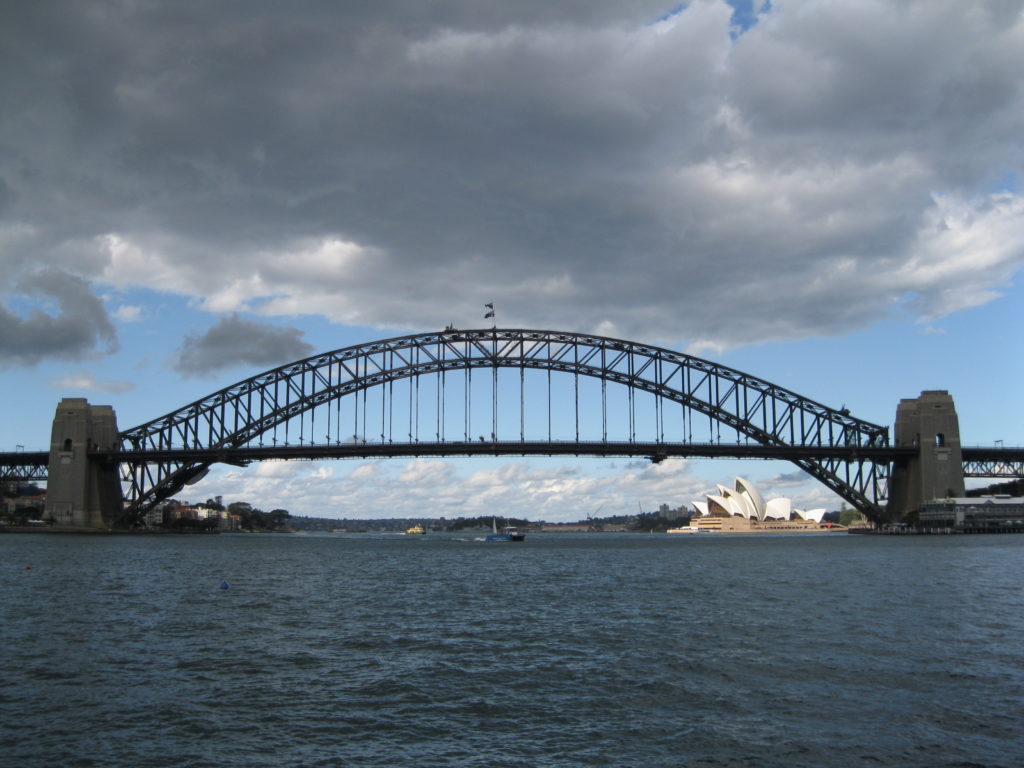
The view of the Sydney Harbour Bridge and the Sydney Opera House is absolutely magnificent here with the city skyline to the right and the skyline of Milsons Point to the left across Lavender Bay.
There are plenty of fantastic photo opportunities here as this is probably one of the best vantage points in town of the bridge and the opera house. One of the closest shots you can get where you can have both the whole bridge and the opera house within the frame.
Bondi Beach
The Bondi Beach area is located in the Eastern Suburbs south of the harbour. It’s the most famous Sydney beach and also one of the most visited. Due to all the publicity it gets it will be busy not only with locals, surfers and joggers but also with a lot of tourists. So if you prefer a beach with less activity there are plenty of other beaches in town to choose from.
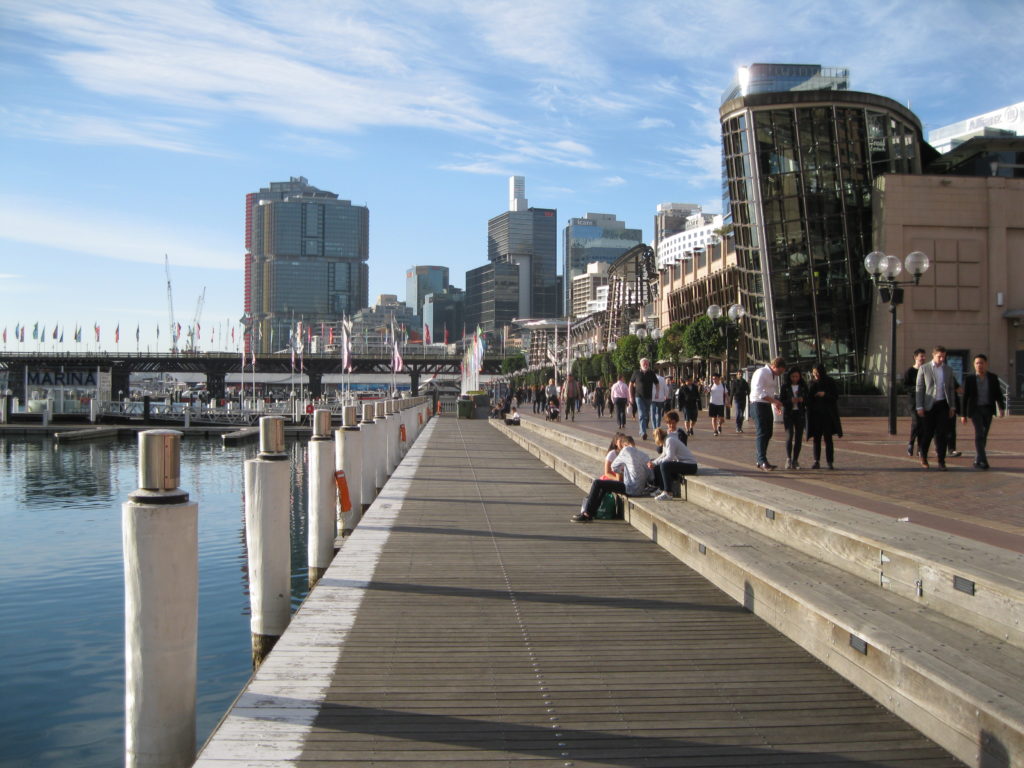
Bondi Beach is located 8 km (5 miles) from the city centre. It is easy to get to by public transportation by bus from Town Hall which takes about 30 minutes. There are plenty of places to visit if you are up for a bite to eat such as beachside cafés, hip bars and restaurants.
Experienced surfers head to the southern end of the beach where swells and rocky reef create powerful waves. On the adjacent Campbell Parade you can find shops with surf gear and surfboards. Also at the southern end of the beach, Bondi Iceberg is located, one of Australia’s oldest swimming clubs which is open to the public along with its bar and bistro.
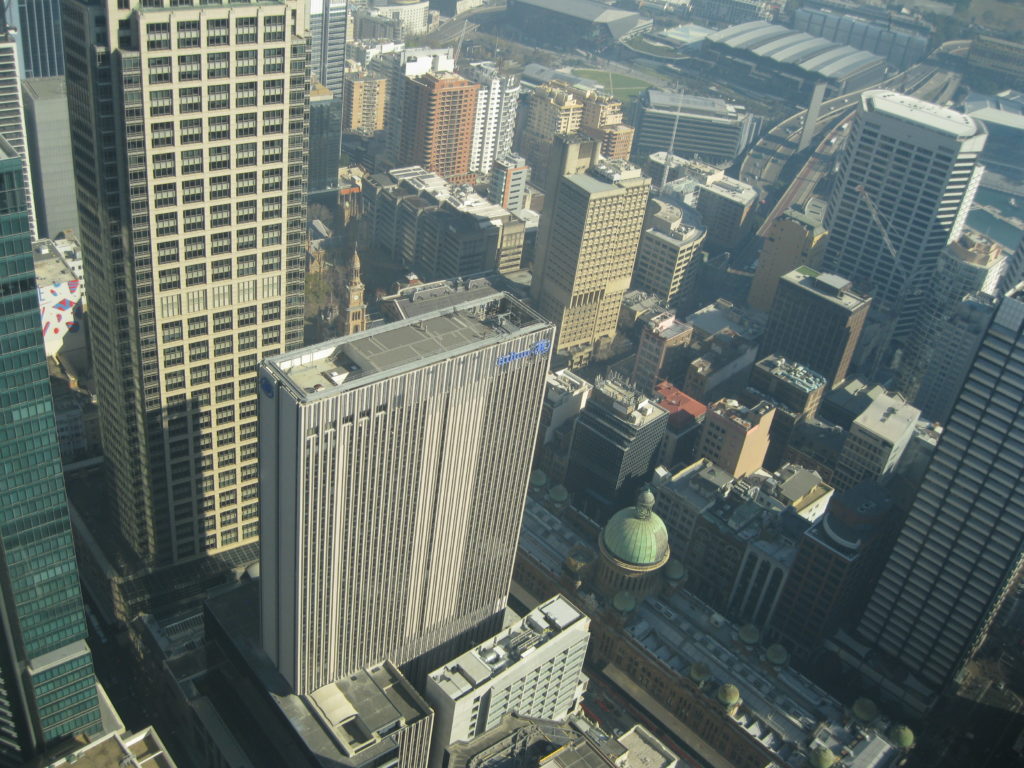
Other fun facts…Bondi Beach is the end point of the yearly City to Surf road running event which starts in city centre and stretches 14 km. The beach volley tournament of the Sydney 2000 Olympics was held here as well where a temporary 10,000 seater venue was installed.
Coogee Beach
Coogee Beach is another popular spot. It will be less crowded than Bondi Beach.
Coogee Beach is known for its calm surf and promenade area with restored buildings and nurtured parklands. Facilities are located at mid-beach with showers and change rooms.
Not far from the beach, the Coogee Bay Hotel, which is one of the most popular pubs and restaurants in the Eastern Suburbs, is located along with other upmarket restaurants and boutiques.
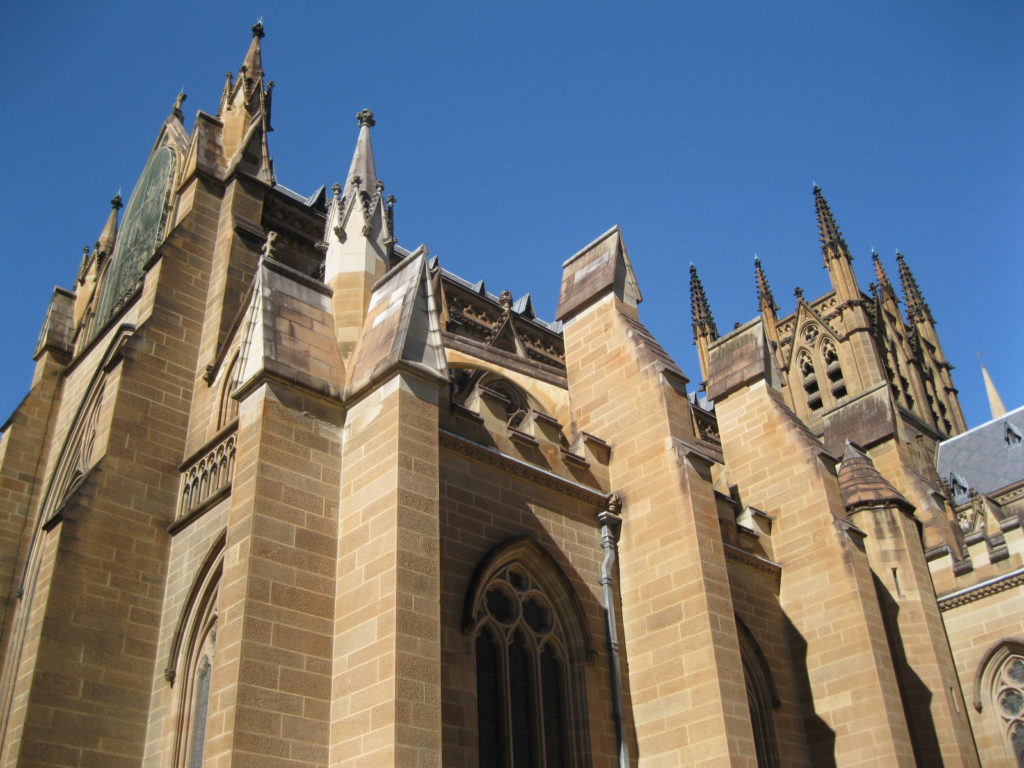
Coogee Beach is the ideal spot to begin the coastal walk to Bondi along a clearly marked pathway with amazing ocean vistas on the way through.
Paddington
Paddington is a delightful neighbourhood of the Eastern Suburbs of the inner-city is Paddington with its galleries, designer boutiques, restored heritage pubs and the Paddington Market. One of the main attractions is Oxford Street, a shopping strip stretching one kilometre with boutiques, pubs, cafés and colonial-era buildings. The street is especially known for its big range of clothing stores.
The historic Victoria Barracks, located between Oxford Street and Moore Park Road is an army base. The main barracks were built by convicts from 1841-1846. This is the headquarters for the Forces Command with in the Australian Army responsible for combat brigades.
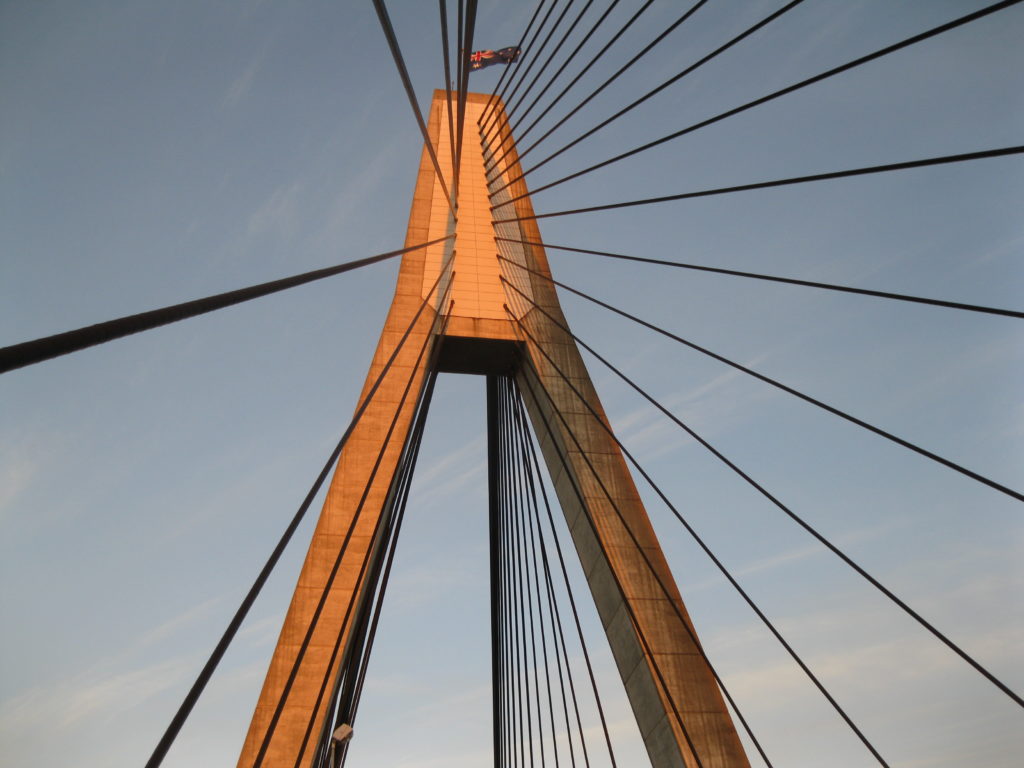
Opposite the Victoria Barracks, the fashion hub “The Intersection” is located, home to leading Australian brands. Some of Australia’s top designers started in Paddington.
At 249 Oxford Street the heritage-listed Paddington Town Hall is located. The structure was completed in 1891 and is a distinctive example of Victorian architecture in Sydney.
William Street, which is a side street to Oxford Street, is home to a wide range of stylish shops in beautiful 19th century terrace houses where designers and traders sell their products.
Paddington Markets is held at the Paddington Uniting Church, 395 Oxford Street every Saturday. This is a community based market supporting local craftsmanship.

If you’re into architecture you should head down to The Five Ways. This is a junction about 300 metres (984 ft) north of Oxford Street in the heart of Paddington and has a collection of 19th and 20th century buildings such as the Royal Hotel built in Classical and Victorian style. From the roof top you can get a great view of the city.
Balmain
If you’re up for a good time and a night out on the town, you should check out the most happening suburb of the Inner West called Balmain. Darling Street is the main street where a lot of shops, restaurants, cafés and pubs are based.
If you are going from the city centre it is recommended that you catch a Sydney Ferry bound for Balmain East as this wharf is based right at Darling Street. There’s an abundance of historic hotels in Balmain which now only function as drinking establishments and restaurants, not only on Darling Street but all around the suburb such as on Beattie Street where both Dick’s Hotel and The Exchange Hotel are located.

There are plenty of opportunities for a good time but also for exploring great old architecture such as the old hotels and churches and schools of which some are listed on the heritage register known as the Register of National Estate. The suburb also has a vast selection of restored cottages and terrace house.
If you want to go on a shopping spree head down Darling Street or go to the weekend market. Take a stroll on the streets and discover many restored Georgian and Regency buildings such as the London Hotel dating back to 1870. The Unity Hall has live jazz music on Sundays, a tradition they have held high for more than 40 years. The pub is conveniently located close to the Balmain wharf.
Leichhardt: Sydney’s Little Italy
Leichardt is truly a cosmopolitan hub located a little over 5 km (3.1 miles) from the CBD in the Inner West. It’s a mixture of residential and commercial developments and a lot of people of Italian descent live here hence being dubbed Sydney’s Little Italy.
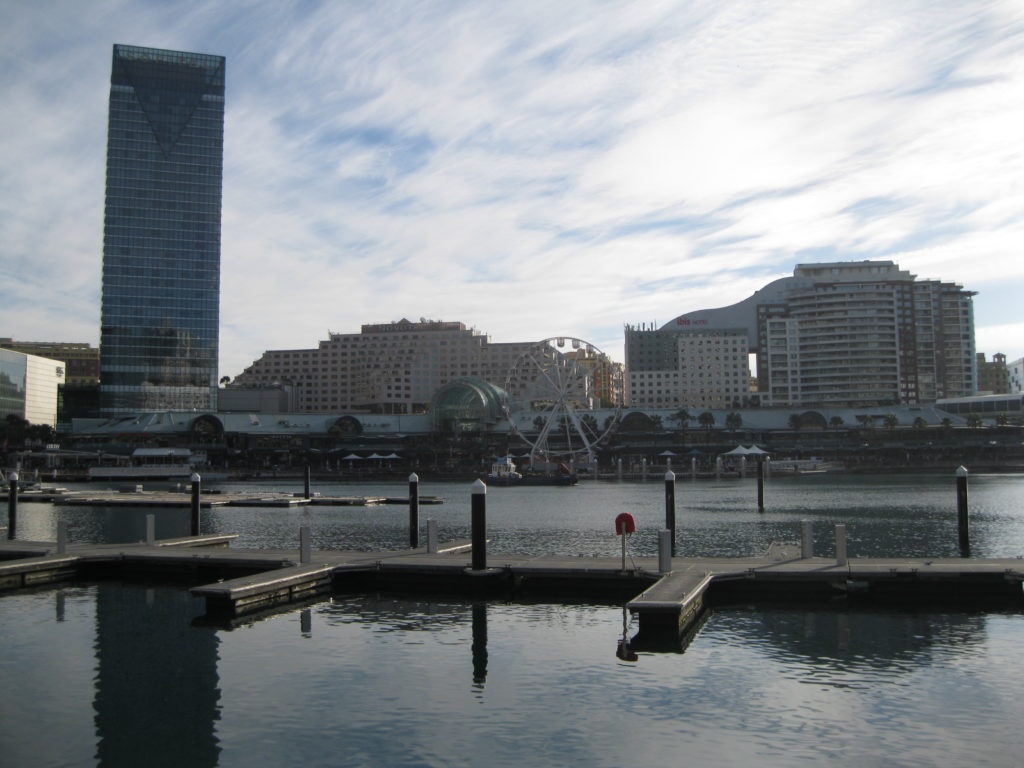
The suburb has an abundance of cafés and restaurants and it well connected to the city centre with several buses routes, the Light Rail and the Sydney Rail with at station close by at Lewisham.
The main attraction of the suburb is the Italian Forum located in the commercial area. It was built to replicate many Italian villages with the pedestrian only Piazza filled with indoor and outdoor restaurant dining and boutiques mixed with residential housing. There are two other shopping malls in the neighbourhood that accommodate the big supermarkets and specialty shops among other things.
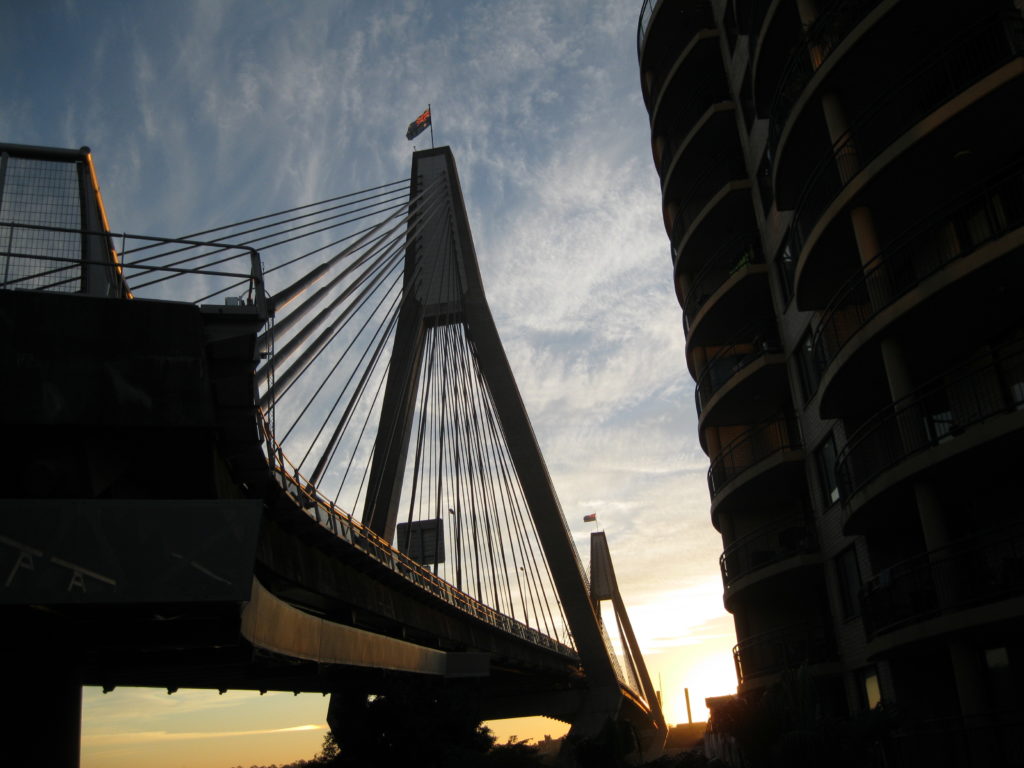
A fascinating aspect about Leichhardt is the so-called warehouse conversions, which is when warehouses have been converted into large open plan units. A part of Sydney’s industrial past have been transformed into trendy homes. People are attracted to the buildings as they have character with their rustic elements and have history in their very structure
Newtown
The colourful suburb of Newton is located in the Inner West. King Street is the main street going through the neighbourhood, filled with designer boutiques, book stores, vintage shops, specialty stores, cafés, pubs and restaurants, among it vast collection of charming 19th century terrace house. All adding to the hip vibe that pulsates through this unconventional suburb.
King Street is the longest and most complete commercial district of the late Victorian and Federation period in Australia. You will have plenty of opportunities for a great day strolling around or a fabulous night out on the town.
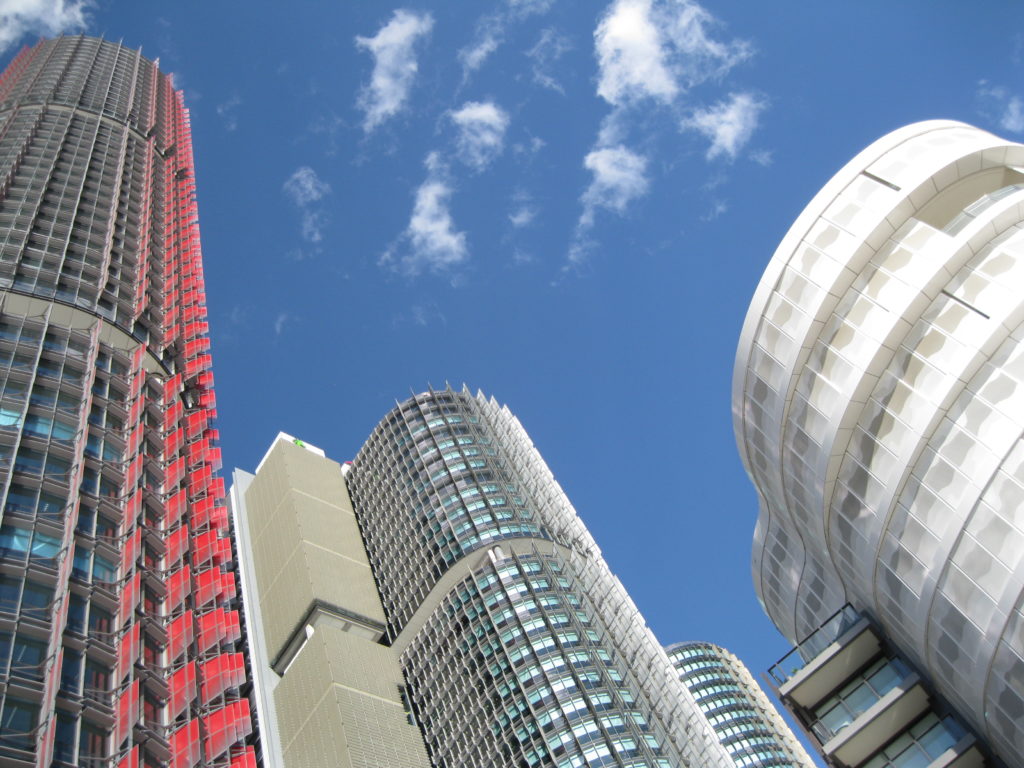
Newtown is known for its thriving live music scene with venues such as The Vanguard and The Sandringhams nicknamed The Sando by the locals. One of Australia’s finest bands The Whitlams emerged from the latter back in the 1990s. The Enmore Theatre, located on Enmore Road, is another great spot for watching live music or a comedy show.
A fun fact is that about 40% of the population in Newton was born overseas, quite a fascinating cultural aspect of the suburb.
Homebush Bay: The Sydney Olympic Park
To check out the Sydney Olympic Park you have go to Homebush Bay which is located 16 km (10 miles) west of downtown Sydney. The area was created for the Sydney 2000 Olympics and is still used for sporting and cultural events such as the “Big Day Out” which is a music festival.

Stadium Australia is definitely worth checking out. It was the venue used for the athletics tournament during the Olympics and has since also been used for major rugby matches. You can take a tour of the stadium or hire a bike and pedal around the facilities. There are plenty of restaurants and cafés if you feel peckish.
Visit the pool where Ian Thorpe swam during the Sydney 2000 Olympics or go to the Aquatic Centre that celebrates the triumphs of Australians swimmers over the years.
You can head down to the Sydney Olympic Park either by train or ferry. It will take you about 30 minutes by train from Circular Quay or an hour by ferry.
